According provided by YONGNUO LENS YN50mm F1.4 lens. Many thanks directly to Yongnuo.
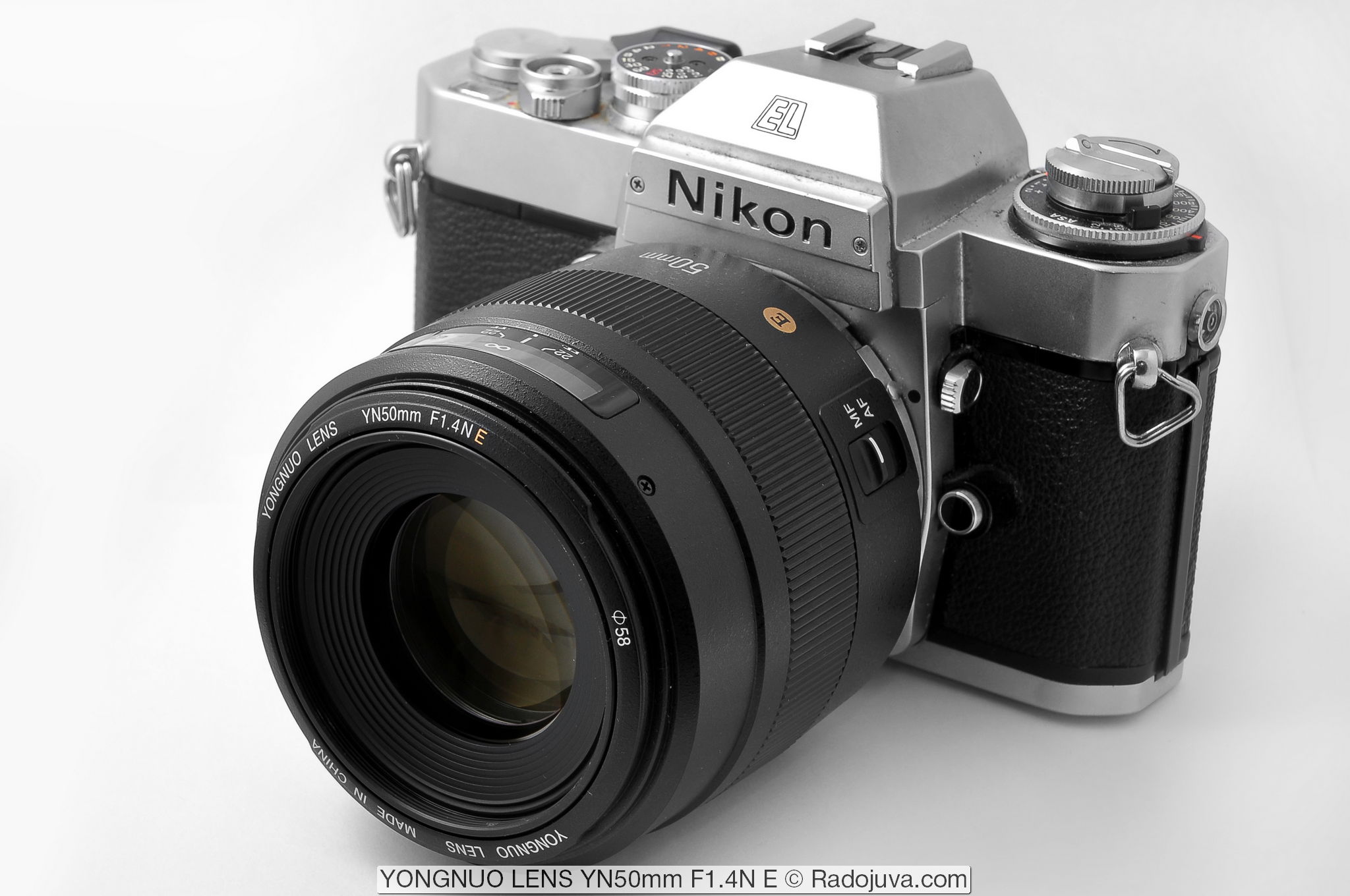
YONGNUO LENS YN50mm F1.4N. The lens is shown in film slr camera Nikon EL2. Enlarge image.
Navigation
- In short
- History
- All lenses from Yongnuo
- Main Specifications
- Assembly
- Focusing
- Firmware Upgrade
- Iris control
- Flash work
- Image quality
- Sample Photos on Nikon D700 (Full Frame)
- Sample photos on Nikon D90 (crop)
- Sample photos in processing
- Differences from Nikon 50 / 1.4G
- My experience
- Video review
- Alternatives
- Price
- Results
- User Comments
- Add your review or question on the lens
In this review, the lens'YONGNUO LENS YN50mm F1.4N E'(as written on the lens near its front lens) I will abbreviate as -'Yongnuo E 50 / 1.4N'.
Spoiler: Radozhiv already has a review of this lens for Canon cameras - YONGNUO LENS YN50mm F1.4, because a lot of information in this review will be repeated from YONGNUO LENS YN50mm F1.4 .
In short
Yongnuo E 50 / 1.4N is a fifty-kopeck piece from Yongnuo for Nikon cameras. Heavy, well-built, with decent image quality. It has a fairly low price tag and is a very attractive solution for amateur photographers. In fact, Yongnuo E 50 / 1.4N is the cheapest autofocus lens with f / 1.4 for full-frame SLR cameras.
Yongnuo E 50 / 1.4N - something in between Nikon 50 / 1.4D AF (price, noisy focus) and Nikon 50 / 1.4G (image quality, built-in motor). But still, in general, Yongnuo E 50 / 1.4N is closer precisely to Nikon 50 / 1.4G.
Yongnuo E 50 / 1.4N is a good lens, it can be safely used for amateur photography. On full-frame cameras, this is a standard (in terms of focal lengths) lens with a very wide range of applications. On cropped cameras, the Yongnuo E 50 / 1.4N can perform quite well as a replacement for a portrait lens.
Here I simply must leave spoiler about fifty dollars. The creative and practical potential of a fast fifty dollars is really difficult to overestimate. It is suitable for a wide range of photo tasks. Photo enthusiasts often use it as a portrait lens, especially on cropped cameras (cameras with an APS-C or 4/3 sensor). Many just want a fast light fixed lens, in addition to its first kit lens. Diaphragm F / 1.4 exactly four steps wideraperture F / 5.6, which is used in the vast majority of 'dark' whale lenses at the long end. In numerical terms, this means that Yongnuo E 50 / 1.4N is approximately 16 times brighterthan, for example, whale Nikon 18-55 / 3.5-5.6G VR AF-Pwhich uses a maximum relative aperture of only f / 50 at 5.6 mm of focal length. The calculation in the difference of the relative aperture (count the aperture) is performed elementarily: (5.6 * 5.6) / (1.4 * 1.4) = 16.
History
April 29 2014 was presented at one of the exhibitions prototype Yongnuo 50 / 1.4which outwardly was very similar to Canon 50 / 1.4 USM. After the announcement prototype Yongnuo 50 / 1.4 did not appear anywhere else, mass production and its sales were not adjusted. Data about this lens has been deleted from the official site.
30 May 2018 on the official website appeared modern Yongnuo 50 / 1.4 for Canon EOS cameras. Some users call this model Yongnuo 50 / 1.4 Mark II.
August 18 2018 Yongnuo E 50 / 1.4NE was introduced for Nikon cameras shown in this review.
Let me remind you that the first lens from Yongnuo Digital was a fifty dollars for Canon EOS cameras - Yongnuo Lens EF 50mm 1: 1.8 (YN50mm F1.8), introduced already in 2014, and the first lens for Nikon was Yongnuo 50mm 1: 1.8 (YN50mm F1.8N) introduced in 2016.
All Yongnuo Lenses
Bayonet mount Sony FE [DF, FULL FRAME] и Sony E[DA,APS-C]:
- yongnuo 11 mm 1:1.8 DA DSM WL S [announcement]
- yongnuo 16 mm 1:1.8 DA DSM S [announcement]
- yongnuo 35 mm 1: 2 DF DSM S [review]
- yongnuo 50 mm 1: 1.8 DF DSM S [announce]
- yongnuo 50 mm 1:1.8 DA DSM S [overview]
- yongnuo 85 mm 1: 1.8 DF DSM S [review]
- yongnuo 85 mm 1:1.8 DF DSM S II [announcement]
Bayonet mount Canon RF (mirrorless full frame):
- yongnuo 35 mm 1: 2 DF DSM R [review]
- yongnuo 35 mm 1:2 CR [announcement]
- yongnuo 50 mm 1:1.8 DF DSM R [to be announced]
- yongnuo 85 mm 1:1.8 DF DSM R (two subversions with different names) [review]
Bayonet mount Nikon Z [DF, FULL FRAME + DA,APS-C]::
- yongnuo 11 mm 1:1.8 DA DSM WL Z [announcement]
- yongnuo 35 mm 1:2 DF DSM Z [announcement]
- yongnuo 50 mm 1:1.8 DF DSM Z [announcement]
- yongnuo 50 mm 1:1.8 DA DSM Z [review]
- yongnuo 85 mm 1:1.8 DF DSM Z [announcement]
Bayonet mount fujifilm x [DA,APS-C]:
- yongnuo 11 mm 1:1.8 DA DSM WL X [announcement]
- yongnuo 50 mm 1:1.8 DA DSM X Pro [Announcement]
- yongnuo 50 mm 1:1.8 DA DSM X [announcement + overview]
For the system Micro 4 / 3:
- yongnuo 25 mm 1: 1.7 [review]
- yongnuo 42.5 mm 1: 1.7 [review]
- yongnuo 42.5 mm 1:1.7 II [overview]
- yongnuo 12-35 mm 1:2.8-4 STM ASPH MACRO [announcement]
Bayonet mount Nikon f (mirrored full frame):
- yongnuo 14 mm 1: 2.8 [overview]
- yongnuo 35 mm 1: 2 [overview]
- yongnuo 40 mm 1: 2.8 [overview]
- yongnuo 50 mm 1: 1.8 [review]
- yongnuo 50 mm 1: 1.4 E [overview]
- yongnuo 60 mm 1:2 MACRO MF [overview]
- yongnuo 85 mm 1: 1.8 [overview]
- yongnuo 100 mm 1: 2 [overview]
Bayonet mount Canon EF (mirrored full frame):
- yongnuo 14 mm 1:2.8 [review N]
- yongnuo 35 mm 1: 2 [review]
- yongnuo 35 mm 1: 1.4 [overview]
- yongnuo 35 mm 1: 1.4C DF UWM [announce]
- yongnuo 50 mm 1: 1.8 [overview]
- yongnuo 50 mm 1:1.8 II [overview]
- yongnuo 50 mm 1: 1.4 [overview]
- yongnuo 60 mm 1:2 MACRO MF [review N]
- yongnuo 85 mm 1: 1.8 [review]
- yongnuo 100 mm 1: 2 [overview]
Cameras:
- Yongnuo YN433 (2023, Micro 4/3, 20 MP, 4K)
- Yongnuo YN455 (2021, Micro 4/3, 20 MP, 4K)
- Yongnuo YN450/450M (2019, Micro 4/3 -> Canon EF, 16 MP, 4K)
Lenses and cameras and many other products from Yongnuo can easily be found at Authorized Yongnuo Dealer / Store on Aliexpres.
My video on all Yongnuo lenses here.
Main technical characteristics of YONGNUO LENS YN50mm F1.4N E
| Review Instance Name | Near the front lens: YONGNUO LENS YN50mm F1.4 Ø58mm YONGNUO LENS MADE IN CHINA. On the YOUNGNUO DIGITAL 50mm. On the box: YOUNGNUO DIGITAL Standart prime lens YN50mm F1.4 |
| Basic properties |
|
| Front Filter Diameter | 58 mm, metal thread for filters |
| Focal length | 50 mm, EGF for Nikon DX cameras is 75 mm |
| Zoom ratio | 1 X (this is a fixed lens, it does not have a zoom) |
| Designed by | for full and cropped Nikon digital cameras |
| Number of aperture blades | 7 rounded petals |
| Tags | bayonet mount tag, window with a scale for focusing distances in meters and feet, DOF scale (only for F / 22) |
| Diaphragm | F / 1.4 to F / 22 |
| MDF | 0.45 m, maximum magnification factor 0.15x (1: 6.67) |
| The weight | 577 g |
| Optical design | 9 elements in 7 groups. The lens uses special optical elements with an extremely high refractive index (shown in blue)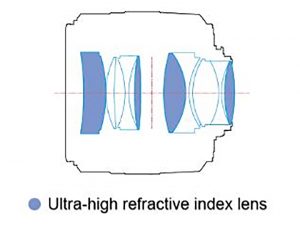 |
| Lens hood | Bayonet type hood. The hood is not included in the delivery, the instruction does not indicate its type / marking. Fit Canon ES-71II or any clone of it |
| Manufacturer country | MADE IN CHINA (Made in China) |
| Period | From August 18, 2018 |
| Instructions | View my scan (English only) |
| Price | Aliexpress prices |
The optical design of the lens attracts a massive concave front element. Most likely the optical design takes its roots from Carl Zeiss 1,8 / 50 Ultron / Voigtlander Color-ultron 1.8 / 50. Of modern autofocus lenses, a similar concave front element can be found in Carl Zeiss Sonnar FE 1,8 / 55 ZA T * (Aka Sony SEL55F18Z FE 1,8 / 55) Most likely the optical circuit of Yongnuo E 50 / 1.4N (as well as YN50mm F1.4 for Canon) belongs to some old and unreleased Nikon / Canon lens, which did not reach mass production.
Assembly
The lens came to the review completely new.
In a small box is a warranty card, instructions in Chinese and English, a card with a production date of 15-10-2018, a desiccant and the lens itself with a front (YN-58) and a back cover. The front and rear lenses of the lens are initially covered with special transport films of blue color. Unfortunately, one of these films left a small mark on the front lens, which I easily cleaned with a special cloth for optics.
In general, the lens is well assembled. Yongnuo E 50 / 1.4N has metal mount mount. The focus ring is not rubberized, plastic, but wide enough and pleasant to use. The lens body is made mainly from metal. The thread for the filters is also metal. It is stated that the contacts of the microprocessor are gold-plated.
One serious nuisance was still present in the assembly: the lens arrived with a slightly unscrewed front of the frame (trunk). For the sake of interest, I wanted to unscrew the trunk completely, but this did not work for me, after which I screwed it back tightly. This problem did not recur again. Unfortunately, I think this is a complete disgrace.
The weight of the Yongnuo E 50 / 1.4N is almost 600 grams. In my hands, the lens feels like a good thing, better than Yongnuo 50 / 1.8 . The Yongnuo E 50 / 1.4N lens weighs significantly more than the TOP original Nikon 58 / 1.4G. Paired with rather heavy cameras, the Yongnuo E 50 / 1.4N allows you to get a good weight balance of the camera + lens bundle.
The design of the Yongnuo E 50 / 1.4N is very similar to Canon Compact-Macro 50 / 2.5. This time, the design was not copied from any Nikon Nikkor lens, as, for example, this could be observed in the case of Yongnuo 50mm 1: 1.8that was externally copied from Nikon 50 / 1.8G.
Diaphragm consists of 7 petals and form a hole in the shape of a regular heptagon, while in the photographs in the blur zone rather round discs of blur appear in the range F / 1.4-F / 2.5.
The lens has a USB port in the lower rear of the lens (in the bayonet area). The port serves to update the firmware (described in detail about this in the relevant chapter) The USB port does not have a rubber plug.
Unfortunately, the bundle does not include a hood, a bag for transportation, a USB cable and a software disk (software can only be downloaded from the official website).
For the Yongnuo E 50 / 1.4N, the Canon ES-71 II hood is suitable. I used an analog Hoods Canon ES-71 II (for lens Canon 50 / 1.4 USM). The hood mounts on the lens barrel rather than the retractable 'trunk', which adds strength to the structure and also makes front lens movement less noticeable. Important: this lens hood is not installed in the opposite direction (in transport mode), the lens is too thick and the lens hood is stuck in the middle. In general, a funny situation turns out: the lens is for Nikon, and the lens hood must be used from the lens for Canon.
Yongnuo E 50 / 1.4N does not have a rubber mount mount and is not an all-weather lens.
From myself I’ll add that to the version of this lens for Canon ( YN50mm F1.4) I took more than 10.000 shots, for which he never failed or failed me. There was only a small embarrassment with the unscrewing of the polarizing filter, which jammed.
UPDATED: camera view lens Nikon D5100 After using it for several days (not by me) it ceased to be detected by the camera. Repair cost about $ 20.
Focusing
The lens has built-in focus motor DC-type (DDirectly Current Motor- ordinary DC motor). To be precise, the Yongnuo E 50 / 1.4N is an analog of the Nikon series lenses AF-I. Unlike lenses Nikon AF-Sthat use ultrasonic focusing motors Nikon SWMold lenses Nikon AF-I use a built-in buzzing micro focus motor similar to the Yongnuo DC.
The lens will automatically focus on all Nikon DSLR cameraseven on amateur series models Nikon DXthat do not have a built-in focus motor: D40, D40x, D60, D3000, D3100, D3200, D3300, D3400, D3500, D5000, D5100, D5200, D5300, D5500, D5600as well as mirrorless cameras Nikon Z with adapter FTZ / FTZ II.
Focus speed average (closer to low), roughly comparable to the original lens Nikon 50 / 1.4G. Focus speed does not depend on the light or type of camera. Some modern Nikon Nikor lenses can change the focus speed depending on the lighting. In poor lighting conditions, for example, when you simply close the lens with the front protective cap, the focusing speed can drop significantly.
With the protective cover installed, the Yongnuo E 50 / 1.4N does not perform focusing from infinity to MDF. If you focus from infinity towards MDF, the lens stops at 0.6 meters. If you focus from MDF to infinity, the lens stops at 1 meter. Sometimes this can happen in cases where the lens is just scouring and cannot focus. Please note that this is just a small feature that in real shooting conditions does not affect the convenience of focusing. This behavior I observed only with some lenses from Yongnuo.
Auto focus is very noisy. When shooting a video using auto focus and the built-in microphone in the camera, the noise level is very strong. This noise from the focus motor makes viewing the captured video unpleasant.
When used on cameras Nikon D90, Nikon D80 (with unpretentious Multi-CAM 1000 focusing system) and with Nikon D700 (with advanced Multi-CAM 3500FX Focusing System) I did not have any particular problems. The quality of work varies slightly from camera to camera. But I must note that the tenacity of focus is worse than that of the original lenses.
On camera Nikon D90 I checked the presence of the back and focus front at different focusing distances (infinity and MDF as well). Pictures taken using the Live View mode (which does not suffer from back / front focus) were used as a measure. Focusing accuracy using phase sensors completely coincided with the Live View mode.
From photo shoot to Nikon D80 and Yongnuo E 50 / 1.4N (everything was filmed on an open aperture) of 1000 frames explicit focus errors were about 200 frames that I sent to the basket. I did not experience obvious inconvenience in terms of focusing while working with the Yongnuo E 50 / 1.4N.
The worst of the named cameras, Yongnuo E 50 / 1.4N focused on Nikon D700, best of all - on Nikon D90.
The focus ring is plastic, wide, in manual focus mode it rotates approximately 225 degrees (5/8 of a full revolution of 360 degrees). When extreme positions are reached, the ring does not abut, but continues to rotate very slowly and very tightly. Manual focus is convenient. During manual focusing is heard annoying sound like 'plastic rubs against plastic or metal', while the ring rotates smoothly and quite pleasantly. When changing the direction of focus, there is small lag (delay), but it does not cause much discomfort.
There is a 'AF-MF' (auto focus / manual focus) mode switch on the lens body. The switch positions are reversed compared to the original lenses ('M / AM'<->' MF-AF '). During auto focus focus ring remains stationarywhile it can be freely rotated 360 degrees without any effect on focusing. Unfortunately, unlike many original Nikon lenses, the Yongnuo E 50 / 1.4N does not support continuous manual focus control. Nikon M / A (or similar). The direction of rotation of the focus ring corresponds to the original Nikon 50 / 1.4G.
Lens does not have internal focus, during focusing, the frame of the body ('trunk') moves forward about 1.5 centimeters, while front lens does not rotate. It is possible to use various filters without any problems.
The minimum focusing distance is 45 cm, while you can get the maximum magnification for macro photography 1: 6.67, which is typical for a large number of such fifty dollars.
The lens has a window with a distance scale with marks in meters and feet. The scale is small, on it there are marks for 3, 1.5, 1, 0.8, 0.6, 0.5, 0.45 meters and a label of 'infinity'. There is also a label with the depth of field scale, but only for the value of F / 22. There is no tag for working in the infrared spectrum.
Other focusing features:
- on the distance scale, the focus ring has a large 'travel beyond infinity'. The Yongnuo E 50 / 1.4N does not have a hard infinity mechanical stop that allows you to accurately and quickly focus the lens to infinity under any external temperature conditions. For accurate aiming at infinity, you cannot just bring the focusing ring to its extreme position.
- Focus shift (shift-focus) is missing.
- The Yongnuo E 50 / 1.4N has a tangible 'Focus Breathing' effect (changing the viewing angle during focusing). During focusing towards the MDF, the viewing angle decreases.
- Teleconverter compatibility unknown
- It's important: This lens does not work with Nikon FTZ / FTZ II adapters
- Nikon FT1 adapter compatibility unknown
- Focusing is performed by simultaneously moving the entire lens block (all lenses) relative to the focal plane
Important: Yongnuo E 50 / 1.4N is a third-party lens. It may happen that it will not work correctly with some Nikon cameras.
USB firmware update
On the lens housing Yongnuo E 50 / 1.4N there is a USB port with which you can update the lens software (firmware / firmware). Unfortunately, the functionality of the YNLensTool Updater Version 1.00 program, which is responsible for working with the lens, is very meager. You can only see the current firmware version and update it to a new one. Firmware versions can be found on the official website. Firmware for your Yongnuo E 50 / 1.4N i Have not found, Including on the official website (maybe she will come out later).
A widespread USB 2.0 MICRO-B port (like a large number of portable devices) is used for connecting to the lens. A USB cable is not included. To connect, I used a USB cable for my old android phone. My lens had firmware V1.01.
A firmware update, most likely, allows you to improve the compatibility of the lens with new cameras, improve the autofocus, eliminates some other errors. I appreciated the usefulness of this function when working with lenses. Yongnuo 100mm 1: 2 и Yongnuo 40mm 1: 2.8 for Nikon cameras. But still it’s very bad that there is no way to roll back (restore) the original firmware that came out of the box.
To upgrade the firmware (software) of the lens:
- Turn off the camera, detach the lens
- Open program YNLens Updater for updating (program for Window or MacOs can be downloaded on the official website here)
- Attach the lens to the computer using a USB cable. If everything went well, the program will automatically detect the connected lens
- Click [Browse] and select the file with the desired firmware
- Click [Start] to start the update. Wait for the update to finish
- Disconnect the cable, attach the lens to the camera and start shooting
Iris control
Yongnuo E 50 / 1.4N uses electromagnetic diaphragm control. Only some Nikon digital cameras can correctly handle this lens.
The exact list of digital cameras that support working with 'E'-type lenses:
Nikon D3, D3s, D3x, D4, D4s, D5, D6, Df, D600, D610, D700, D750, D780, D800, D800E, D810, D810a, D850, D300, D300s, D500, D7000, D7100, D7200, D7500, D5000, D5100, D5200, D5300, D5500, D5600, D3100, D3200, D3300, D3400, D3500
+ Nikon z5, Nikon z6, Nikon z6 ii, Nikon z7, Nikon z7 ii, Nikon z9, Nikon Z fc, Nikon z50 with Nikon FTZ / Nikon FTZ II adapter.
+ Nikon 1 J1, J2, J3, J4, J5, S1, S2, V1, V2, V3, AW 1 with Nikon FT-1 adapter
The exact list of cameras that do not support working with 'E'-type lenses:
Nikon D1, D1h, D1x, D2x, D2h, D2xs, D2hs, D40, D40x, D50, D60, D70, D70s, D80, D90, D100, D200, D3000
+ Fujifilm FinePix S1 Pro, S2 Pro, S3 Pro, S3 Pro UVIR, S5 Pro, IS Pro
'E' type lenses on the cameras in this list will always shoot at full aperture. Other features of the work are possible.
Electromagnetic iris control has some advantages over the older method of iris control by means of mechanical levers of the camera and lens:
- increases aperture value accuracy
- Increases the response speed, which is important for high-speed shooting.
- As far as I know, the old mechanism with the diaphragm lever was designed for a maximum speed of 10 frames per second. The electromagnetic diaphragm can easily work at higher speeds.
- simplifies iris operation during movie shooting
- the mechanism is quieter (at least there is no noise from the aperture control mechanisms built into the camera)
- simplifies the design of the camera itself, as well as macro rings, teleconverters and other adapters. This is very critical for telephoto lenses with a focal length greater than 500 mm.
- third-party lens design is simplified for Nikon / Canon and many other systems, especially mirrorless ones. The manufacturer does not need to globally change the design of the lens for different aperture control mechanisms on different cameras. For all, an electromagnetic diaphragm is used without additional mechanical parts. Let me remind you that, for example, all lenses for cameras Canon EOS equipped with an electromagnetic diaphragm since 1987
- most likely there are other positive features, less obvious, such as improved power consumption or the possibility of having a huge number of aperture blades
Of the minuses of the electromagnetic diaphragm, I would single out only a violation of compatibility with old cameras. For example, with old people, such as Nikon D90, D3000, D2xs iris control on the Yongnuo E 50 / 1.4N will no longer be possible.
On the the official website stated that the lens fully compatible with the following cameras: Nikon D5, D4,D4s, D3, D3x, D3s, D850, D810,D810a, D800,D800E, D750, D700, D610, D600, D500, D300, D300s, D7500, D7200, D7100, D7000, D5600, D5500, D5300, D5200, D5100, D5000, D3400, D3300, D3100 (and where D3500, D3200, DF?).
Flash work
The Yongnuo E 50 / 1.4N is an E-lens, which theoretically means that it includes all the functions available to G lenses, which in turn includes all the functions available to D-lenses. Therefore, the Yongnuo E 50 / 1.4N must correctly transmit the focusing distance to the object to the camera. This information is very important when using external flash units in some automatic modes such as i-TTL. Yongnuo E 50 / 1.4N accurately conveys the focusing distances and I did not find any problems with the flash.
Image quality
As for its class, Yongnuo E 50 / 1.4N shows quite acceptable quality of the created image.
Sharpness
- in the center of the frame at F / 1.4 for resolution, nothing surprising, but still it is enough for many photo tasks
- F / 1.4 aperture at 12 megapixels of the cropped sensor shows itself normally, at 12 megapixels of a full frame - good
- there is a noticeable drop in sharpness to the edges of the frame at f / 1.4
- good resolution in the center of the frame on covered apertures after F / 2
- good resolution at the edges of the frame on covered apertures after f / 4
- good contrast
Distortion
- small barrel distortion
- the overall level of distortion is at a level typical for such lenses
- the nature of distortion is unified, easily corrected in the editor
Vignetting
- general level vignetting is at the level typical for such lenses
- noticeable vignetting observed most strongly at F / 1.4-F / 2
- vignetting amplified with focus towards MDF
- on APS-C cameras with a sensor vignetting practically disappears at F / 2.0-F / 2.8
- vignetting easily fixable in the editor
- vignetting not amplified when using a sufficiently thick filter (with high sides)
Aberration
- open diaphragms have a noticeable amount of spherical and chromatic aberrations
- the strongest chromatic aberration visible at the edges and corners of the image
- general level HA is at the level typical for such lenses
- there is strong friging (HA in the blur zone sample shot) and blooming (HA on very contrasting small details)
- there is a strong coma in the corners of the image on f / 1.4-f / 2.0
Rest
- diaphragm forms fairly smooth discs of blur only in the range of F / 1.4-F / 2.5, at values of F / 2.8-F / 22 you can clearly trace the regular polygons from point light sources in the blur zone.
- color rendering is neutral, pleasant. The lens uses front lens enlightenment, which casts green shades. Many modern lenses have enlightenment that shimmers like the Yongnuo E 50 / 1.4N.
- in some situations, the lens is very afraid of side and back light. The lens can catch a noticeable flare of the frame (sample shot in backlight).
- The wide f / 1.4 aperture creates strong near / far blur, while the bokeh character is quite smooth and pleasing. I should note that the perception of bokeh is mostly subjective.
Important: at the time of the creation of this review, there was no Yongnuo E 50 / 1.4N profile for popular RAW converters. But I noticed that for lenses Yongnuo 50 / 1.8 under Nikon / Canon, as well as for Yongnuo 35 / 2.0 under Canon, lens profiles have already appeared for Adobe Camera Raw and Adobe Lightroom of the latest versions, therefore, most likely, the appearance of a lens profile for Yongnuo E 50 / 1.4N is only a matter of time.
Sample Photos on Nikon D700 (FX)
Full-frame shots Nikon D700. The photos in the gallery below are shown without processing, the conversion of the source RAW files by the original Capture NX-D converter without any additional adjustments.
Original photos in 'JPEG' format (Capture NX-D converter) can be downloaded at this link... Original photos in RAW format ('.NEF', 14 bit, normal compression) can be downloaded at this link.
Sample Photos on Nikon D90 (DX)
Pictures taken with a cropped camera Nikon D90. The photos in the gallery below are shown without processing, the conversion of the source RAW files by the original Capture NX-D or ViewNX-I converter without making additional adjustments. Please note that on Nikon D90 the lens can only work on a fully open F / 1.4 aperture, as it does not support lenses with electromagnetic aperture control. Pixel density on old lady D90 higher than Nikon D3x, D600, D610, D750, Nikon Z6.
Original 'JPEG' photos (Capture NX-D converter) can be downloaded at this link. RAW source photos ('.NEF') can be downloaded at this link.
Photos in the gallery are reduced in size, resize up to 2048 X 1535 pixels (about 3.1 MP) was taken using the free software FastStone Photo Resizer 3.1. Data was imprinted at the bottom of the photos. EXIF (excerpt, aperture, ISO). When reducing the size of photos, I use a quality equal to 80% of the original. This percentage of quality is more than enough to convey all the details in the photo without the excess weight of the file in the 'JPEG'. With 3 MP, you can print photos up to A4 without any problems. The light weight of the photos allows you to quickly view sample photos for general acquaintance with the capabilities of the lens and saves time for photo loading and disk space on my site. When viewing photos on the display of different devices, the site automatically adjusts the photos to the size of the device used. To view a 1: 1 photo pixel by pixel, just open it in a new browser tab, do it as easy as clicking on the photo thumbnail with the middle mouse button (by scrolling) or using the 'open link in a new tab / window' context menu.
Sample photos processed by Nikon D80
Pictures taken with a cropped camera Nikon D80. The photos in the gallery below are shown with a little revision. Please note that on Nikon D80 the lens can only work on a fully open F / 1.4 aperture, as it does not support lenses with electromagnetic aperture control. To work with Nikon D80 it is best to use 'A' (aperture priority) or 'M' (manual exposure control) mode and not change the f / 1.4 value to something else. To summarize, with this camera, shooting will always take place at a fully open aperture and this fact must be constantly taken into account.
Original photos in 'JPEG' format (on-camera JPEG) can be downloaded at this link... The strange file names are due to the fact that after 10.000 frames the frame counter is Nikon D80, as with the vast majority of other Nikon cameras, it is reset and the account starts again, and placing files with the same name in the same folder is not always possible. The archive is 100 files, including 38 portraits. Some photos were captured using a polarizing filter HOYA 58mm PL-CIR.
Also some additional photos can be found in my gallery on the service 500Px... Another photo in small processing on Canon EOS 5D cameras and Canon EOS 750D (aka Canon Digital Rebel T6i, aka Canon Kiss Digital X8i) with the lens YONGNUO LENS YN50mm F1.4 under Canon you can also view gallery 500Px.
Differences from Nikon 50 / 1.4G
According to its characteristics, Yongnuo E 50 / 1.4N is most similar to the original Nikon 50mm 1: 1.4G AF-S Nikkor SWM
Advantages of Nikon 50 / 1.4G over Yongnuo E 50 / 1.4N:
- Nikon 50 / 1.4G uses 9 aperture blades. Yongnuo E 50 / 1.4N aperture blades have only 7
- Nikon 50 / 1.4G uses virtually internal focus
- Nikon 50 / 1.4G significantly shorter
- Nikon 50 / 1.4G approx twice as easy
- Nikon 50 / 1.4G focuses much quieter and more accurately
- Nikon 50 / 1.4G uses ultrasonic focusing motor Nikon SWMand the Yongnuo E 50 / 1.4N uses a conventional micro motor. Focusing speed is almost equal
- Nikon 50 / 1.4G has a feature continuous manual focus control Nikon M / A
- Nikon 50 / 1.4G has tag for infrared more
- Nikon 50 / 1.4G has rubberized ring focusing without lag
- Nikon 50 / 1.4G has more familiar switch directions focus modes
- Nikon 50 / 1.4G uses high quality SIC enlightenment (Nikon Super Integrated Coating). The specific type of Yongnuo E 50 / 1.4N multi-coating is unknown
- Nikon 50 / 1.4G has rubber mount sealproviding basic protection against dust and moisture
- Nikon 50 / 1.4G Profile sewn into modern camerasthat can automatically correct some types of distortion, such as distortion or vignetting. Also, the profile for Nikon 50 / 1.4G is present in almost all modern RAW converters and allows you to quickly get rid of some distortions.
- Nikon 50 / 1.4G consists on the Nikon NPS list and is a professional lens, which in some cases can significantly simplify its repair or replacement
Advantages of Yongnuo E 50 / 1.4N over Nikon 50 / 1.4G:
- Yongnuo E 50 / 1.4N 10 years newer. The original Nikon 50 / 1.4G was introduced back in 2008
- Yongnuo E 50 / 1.4N costs approximately half as much
- Yongnuo E 50 / 1.4N uses more complex and unusual optical design. Nikon 50 / 1.4G uses a more classic design
- Yongnuo E 50 / 1.4N has USB port for firmware upgrade
- Yongnuo E 50 / 1.4N has more long stroke focus ring
- Yongnuo E 50 / 1.4N uses diaphragm electromagnetic device
The optical performance of the lenses is at a similar level, but in general the original Nikon 50 / 1.4G will be better.
All Nikon 50-58 / 1.4 / 1.2 autofocus lenses
- Nikon 50mm 1: 1.4 AF Nikkor (first version, MK I) - the lens was produced only in Japan from 1986 to 1991
- Nikon 50mm 1: 1.4 AF Nikkor (second version, MK II, also known as the 'N', or the 'NEW' version) - the lens was only available in Japan from 1991 to 1995
- Nikon 50mm 1: 1.4D AF Nikkor (third version, MKIIIbetter known as 'D'-version) - the lens is available from 1995 to this day. There are two subversions that are no different.
- Nikon 50mm 1: 1.4G AF-S Nikkor SWM (fourth version, MKIVbetter known as 'G' version) - the lens is only available in China from 2008 to this day.
- Nikon N AF-S Nikkor 58mm 1: 1.4G Nano Crystal Coat SWM Aspherical (version better known as'58/1.4') - the lens is only available in Japan from 2013 to this day.
- Nikon Nikkor Z 58mm 1: 0.95 S Noct - The lens is available from 2019 to this day. Premium Lens for Mirrorless Cameras Nikon Z... It does not have automatic focus, but has a record aperture. Complex optical design with 17 elements in 10 groups, with 4 ED elements and 3 aspherical elements.
- Nikon Nikkor Z 50 / 1.2 S - The lens has been produced from 2020 to the present day. Professional S-line lens for mirrorless cameras Nikon Z... Complex optical design with 17 elements in 15 groups, with 2 ED elements and 3 aspherical elements
My experience
I am very good with Yongnuo E 50 / 1.4N. For a little money, it turned out to be a perfectly suitable fifty dollars with a fully functional F / 1.4 aperture (for some photo tasks).
I will dwell on the price separately. Yongnuo E 50 / 1.4N is:
- at the time of this review, the Yongnuo E 50 / 1.4N is the cheapest electromagnetic aperture lens for Nikon
- The cheapest autofocus fifty dollars for Nikon SLR cameras with F / 1.4
- the cheapest fifty dollars among all autofocus fifty dollars with F / 1.4, which you can buy new
- the cheapest autofocus full-frame lens with f / 1.4
- The Yongnuo E 50 / 1.4N is cheaper than not only any full-frame lens with F / 1.4, but also any cropped autofocus lens with F / 1.4
Yongnuo E 50 / 1.4N costs a little cheaper than the original Nikon 50 / 1.8G... F / 1.4 aperture is about 2/3 brighter than f / 1.8. As a result, what to choose is a difficult and open question.
In the general case I recommend using a balanced original Nikon 50 / 1.8G.
Original Nikon 50 / 1.8G it focuses faster and is much quieter, has virtually internal focusing, a rubber mount mount seal, a mode of constant manual focus control, weighs less and uses aspherics in its optical design.
Video review
You can watch the video review at my humble Youtube channel by this link, or below:
Comments on this post do not require registration. Anyone can leave a comment. Many different photographic equipment can be found on AliExpress.
Prices
Yongnuo E 50 / 1.4N is not a very expensive lens. Easiest and cheapest Buy Yongnuo E 50 / 1.4N at aliexpress.comfor example, from a trusted seller at this link.
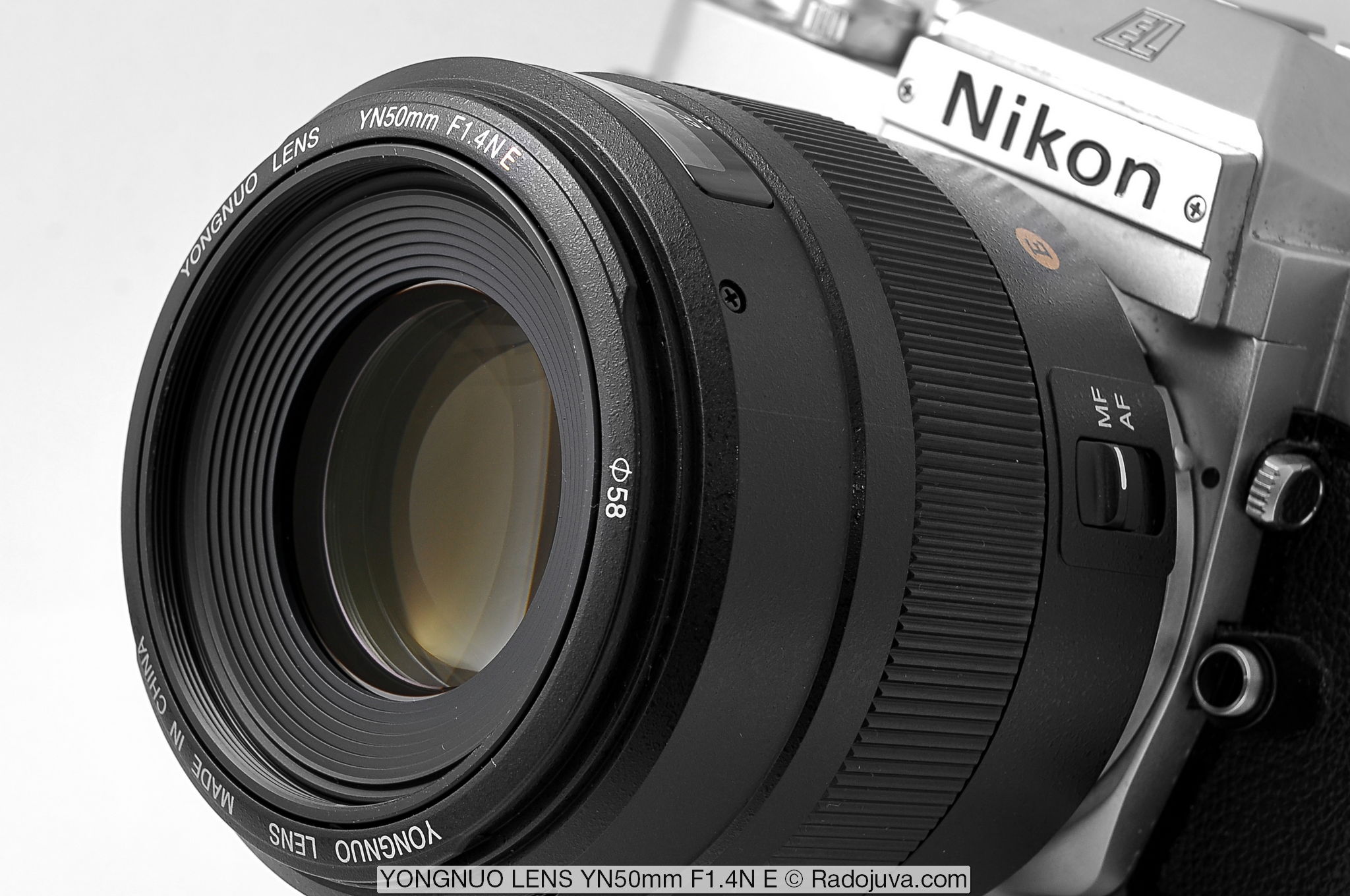
YONGNUO LENS YN50mm F1.4N. The lens is shown in film slr camera Nikon EL2
Results
Yongnuo E 50 / 1.4N is a very functional lens for little money. In many situations, Yongnuo E 50 / 1.4N can be an excellent replacement for the original Nikon 50 / 1.4G. In general, the Yongnuo E 50 / 1.4N is better than the original old man Nikon 50 / 1.4D AF.
Advantages
- low cost ($ 150-180 for the new Yongnuo E 50 / 1.4N). This is the cheapest autofocus lens with F / 1.4 in general among all autofocus lenses
- high aperture
- unusual / unique optical design. The optical scheme uses special elements with an ultrahigh refractive index. The front element is concave (a rarity for this kind of lens)
- electromagnetic aperture control (nice feature for Nikon SLR camera users)
- USB port for firmware upgrade
- convenient manual focus, the focus ring rotates 225 degrees
- there is a window with a scale of focusing distances
- the filter frame does not rotate during focusing
- fixed focus ring during auto focus (e.g. Nikon 50 / 1.4D AF the ring rotates and cannot be touched)
- good build quality: metal bayonet mount, most of the body is metal, reliable and comfortable covers, bayonet type hood, hood is not mounted on the trunk
- depth of field scale, no focus shift
- seven-petal diaphragm, round discs of blur in the range of F / 1.4-F / 2.5
- nice / neutral drawing, which can be used as a good artistic technique during portraiture
- Confident sharpness starting at f / 1.4 in the center of the frame. Moderate level of basic optical distortion (aberration, vignetting, distortion) comparable to the original Nikon 50 / 1.4D AF and / or Nikon 50 / 1.4G
Disadvantages
- limited options for adjusting the lens via the USB port. You can only upgrade the lens firmware. Cannot roll back firmware to previous version
- at the time of writing the review on the official website for the lens there were no any firmware
- big weight (577 grams for Yongnuo E 50 / 1.4N vs 280 grams for Nikon 50 / 1.4G)
- during focusing towards MDF, the front of the frame (trunk) moves forward
- average focus speed (closer to slow)
- ordinary micro focusing motor and, as a result, the lack of constant manual focus control, similar to, for example, M / A mode у Nikon 50mm 1: 1.4G
- tangible noise from the focus motor
- unsystematic focusing errors (but it cannot be said that there are tangible problems with focusing)
- plastic focus ring, unpleasant rubbing sound during manual focus
- a small lag of the focus ring during manual focus when changing the direction of rotation
- no hoods included, no official information on compatible hoods
- The lens trunk can be partially unscrewed with a little effort. A copy from the review has already arrived with a half-unscrewed trunk. The problem is easily treated with stronger trunk screwing, done simply by hand, without any tools
- there is no basic dust and moisture protection (for example, Nikon 50 / 1.4G there is a rubber mount seal)
- tangible effect of 'Focus Breathing' (changes in viewing angle during focusing)
- the aperture at F / 2.5-F / 22 is poorly rounded and is a regular heptagon
- there is no tag for working in the infrared spectrum, the depth of field and focusing distances are small
- There is incompatibility with cameras that do not support electromagnetic aperture control (an exact list is in the review). This is more a Nikon system problem than a Yongnuo E 50 / 1.4N
- unknown compatibility with Nikon FTZ and Nikon FT1 adapters and teleconverters
- lack of data about the lens in modern cameras, which makes it difficult to automatically correct some types of optical distortion (distortion, vignetting etc.)
- lack of a lens profile in popular RAW converters (temporary drawback, you can create a profile yourself or wait for its release)
- the survivability of this lens and the variation in quality are unknown. Little Information on Certified Yongnuo Lens Service Centers
- certain imperfections in the image (poor sharpness at F / 1.4 at the corners and edges of the image, poor resistance to side light without a lens hood, a set of optical distortions characteristic of such fifty dollars)
Material prepared Arkady Shapoval. Training/Consultations | Youtube | Facebook | Instagram | Twitter | Telegram

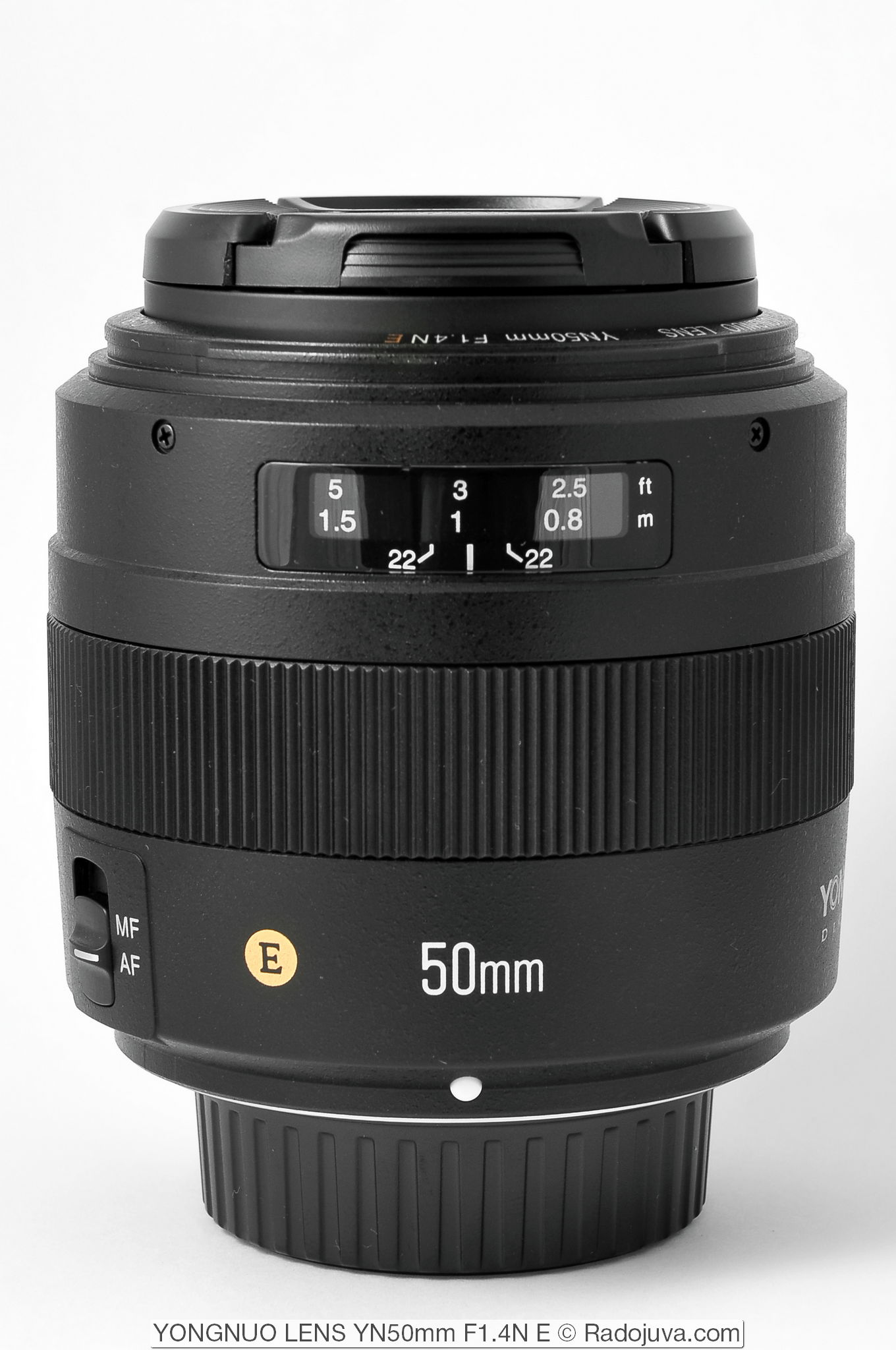
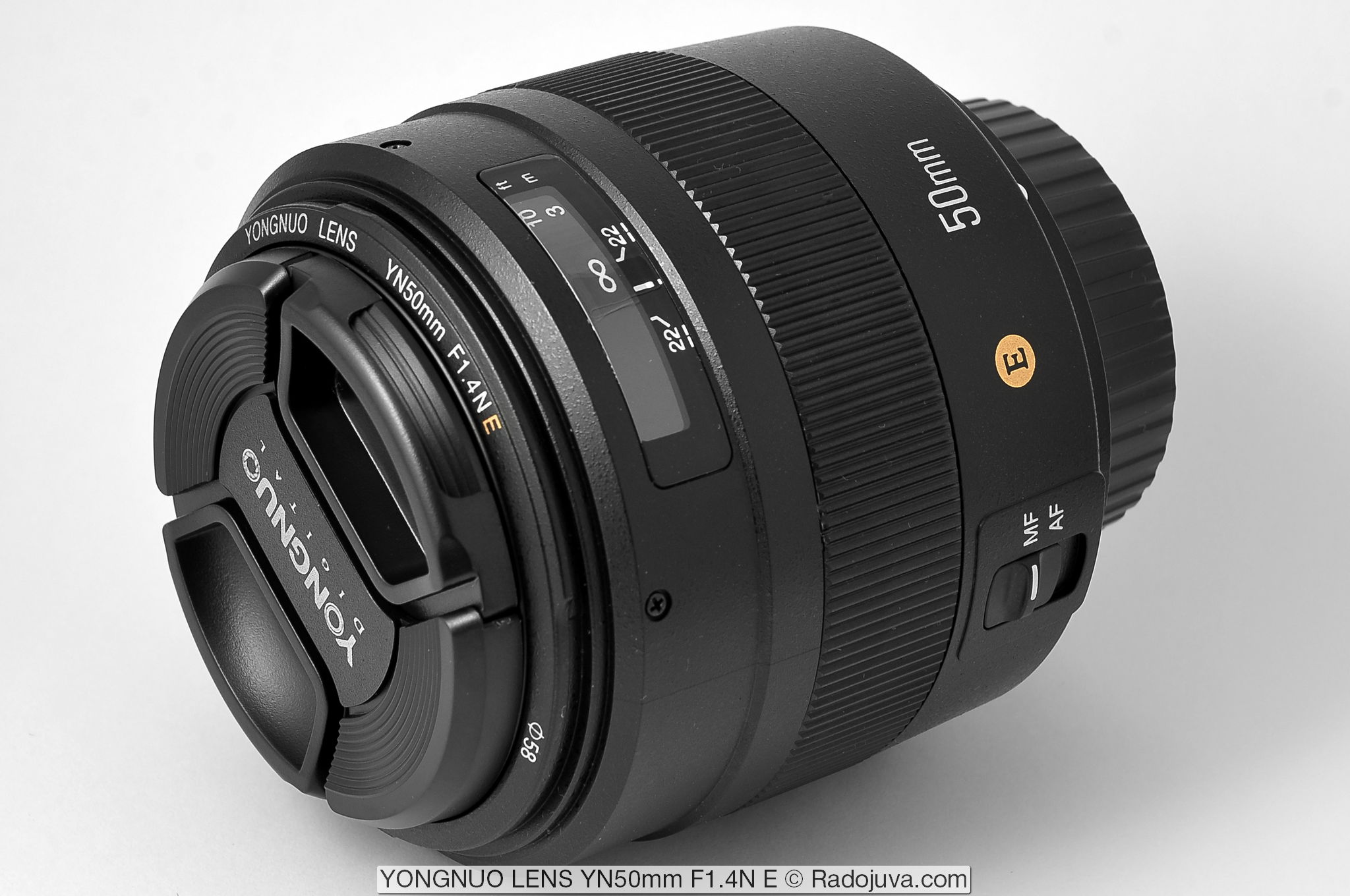
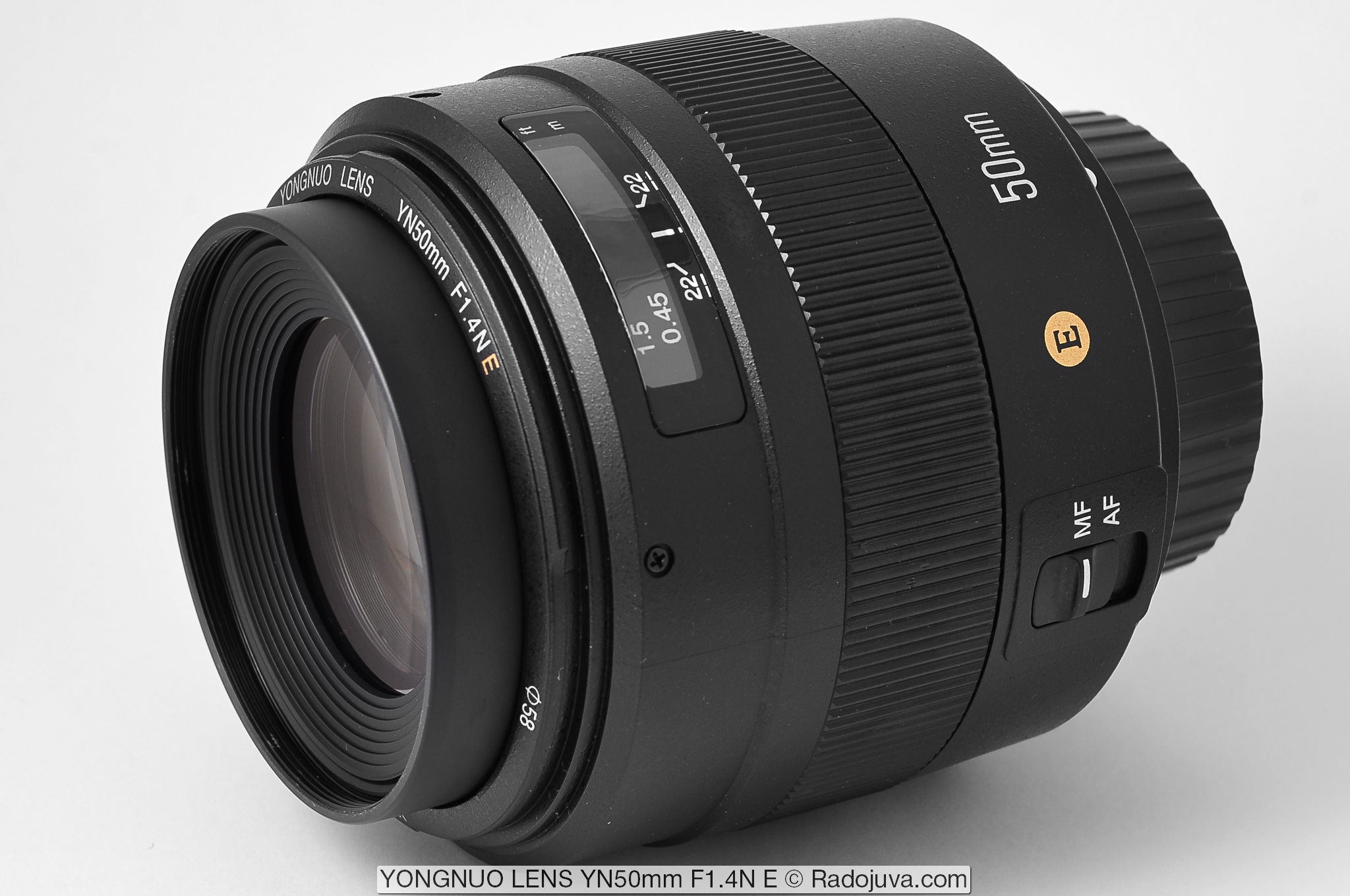
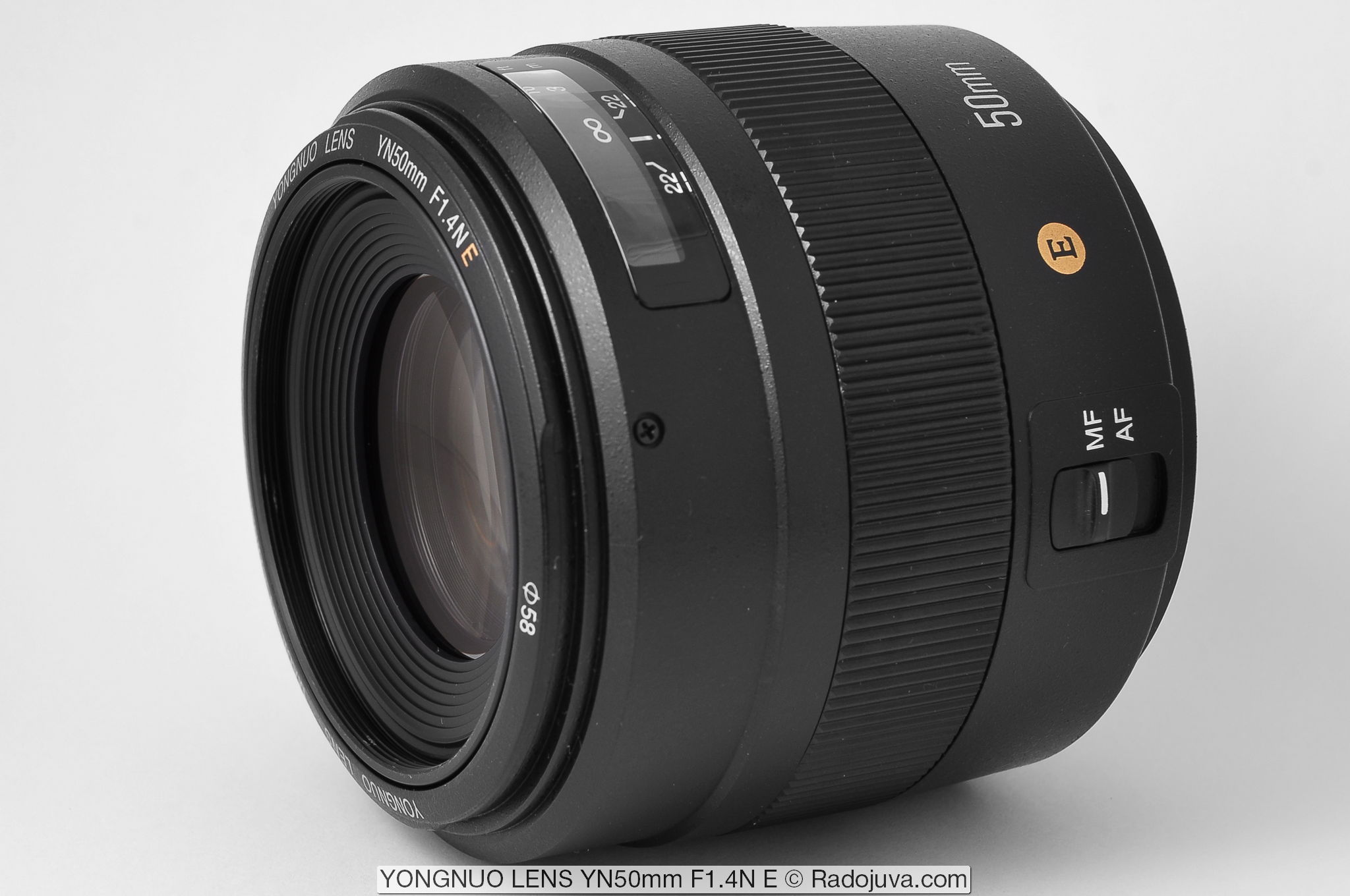
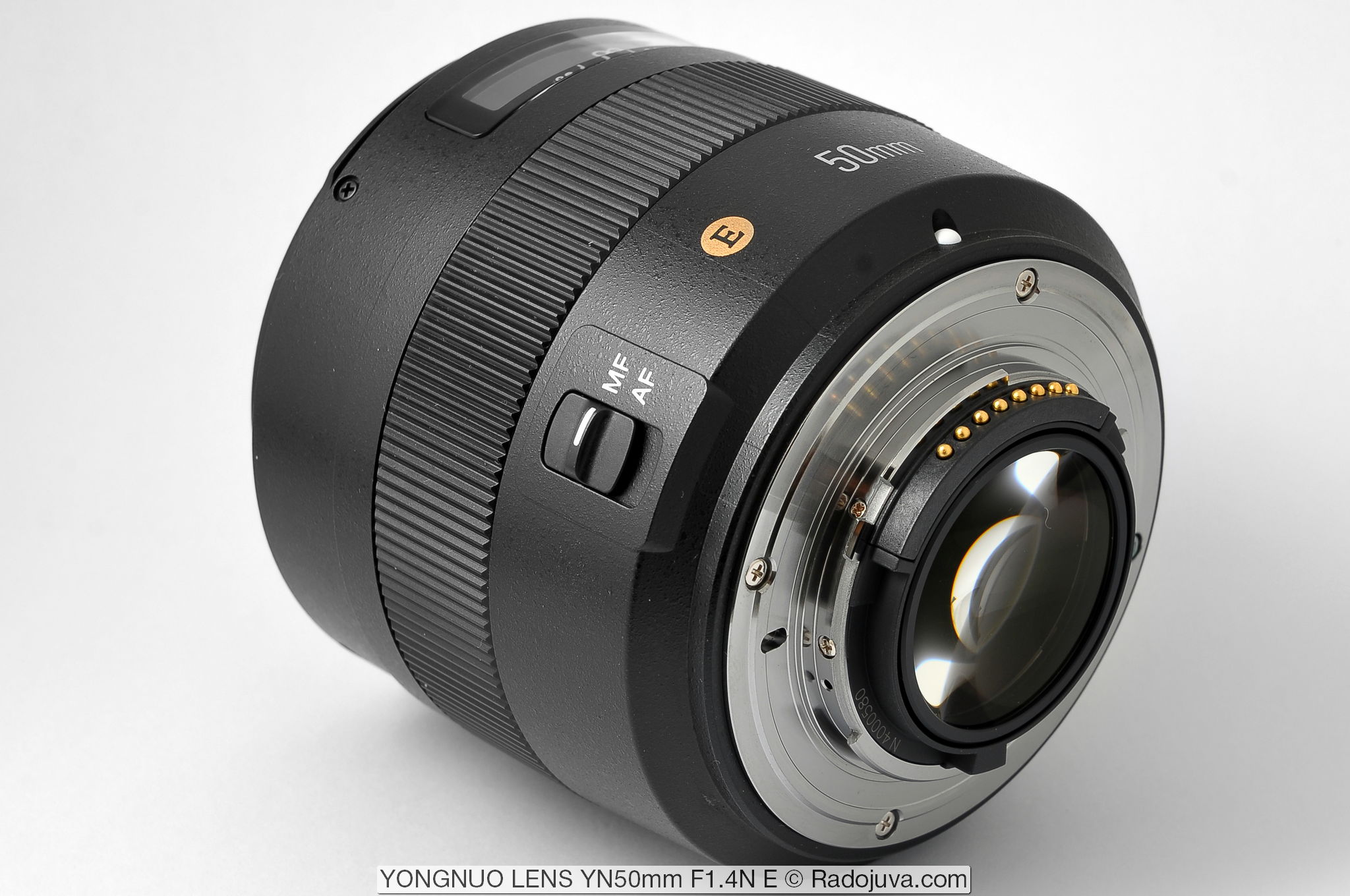
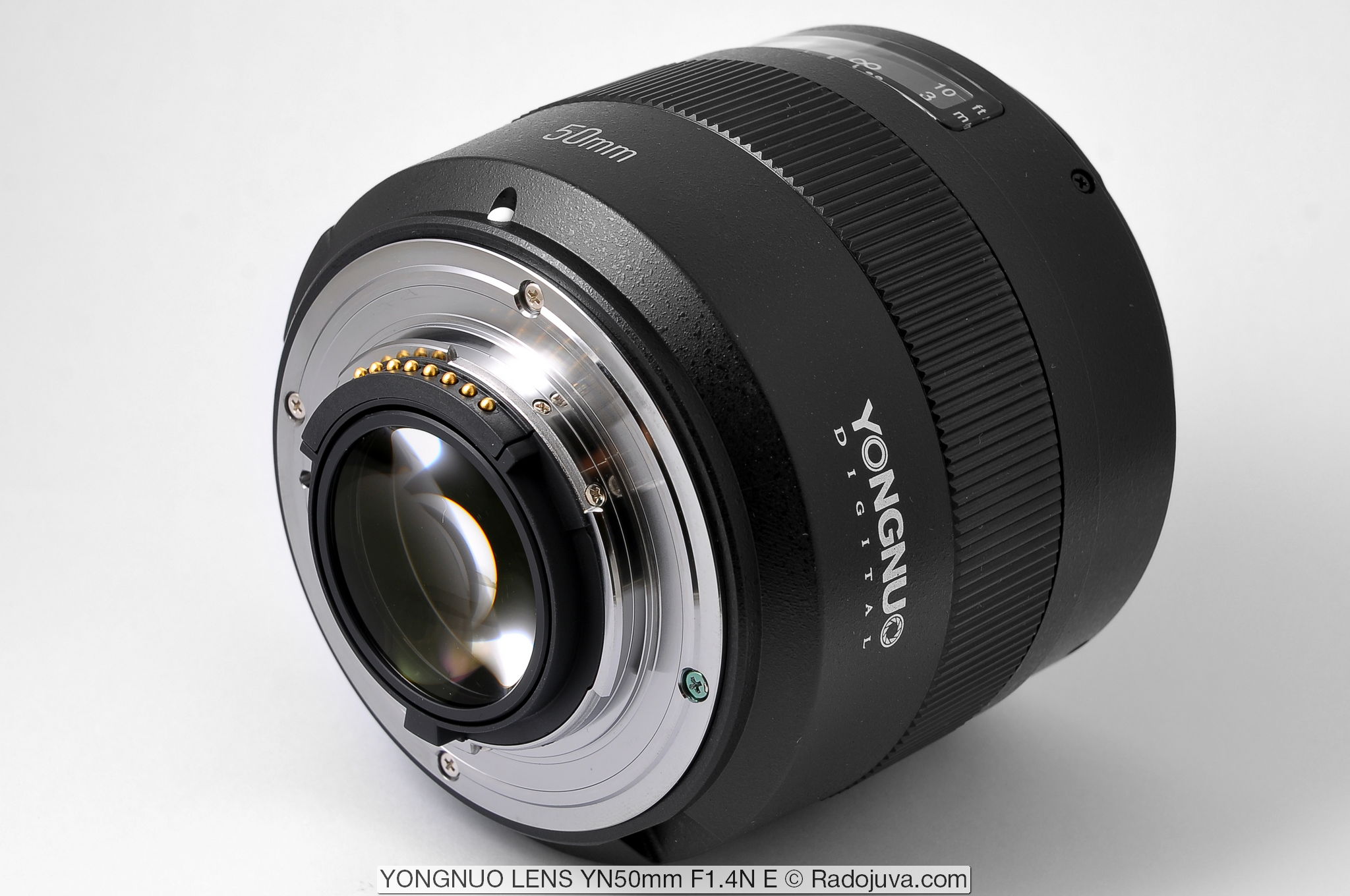
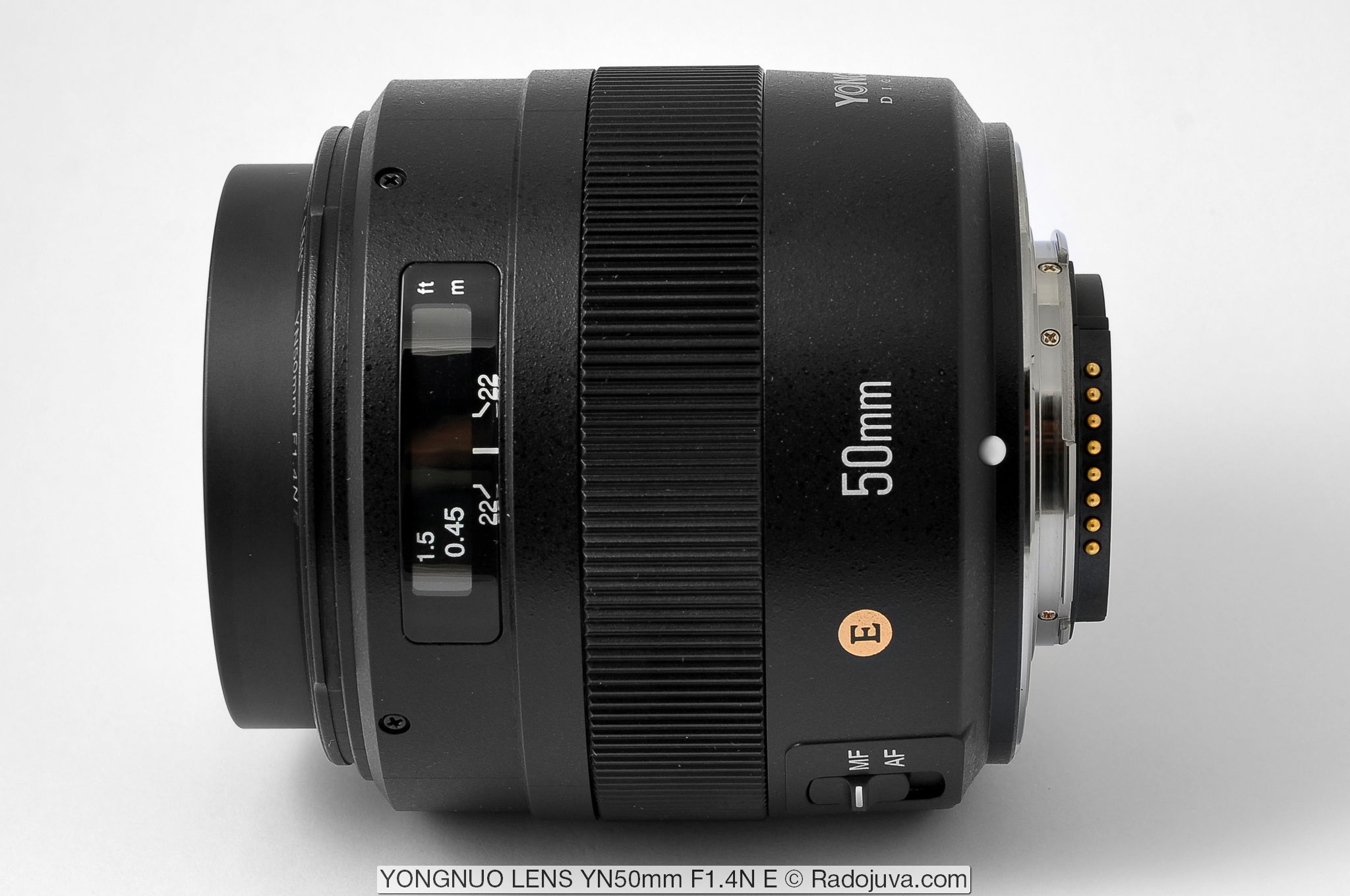
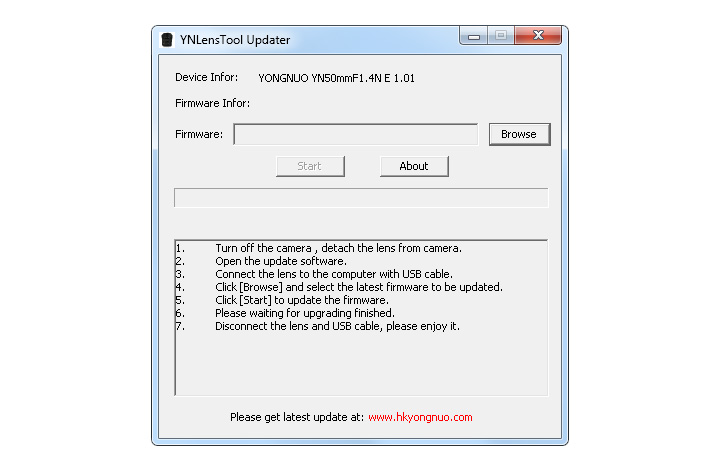
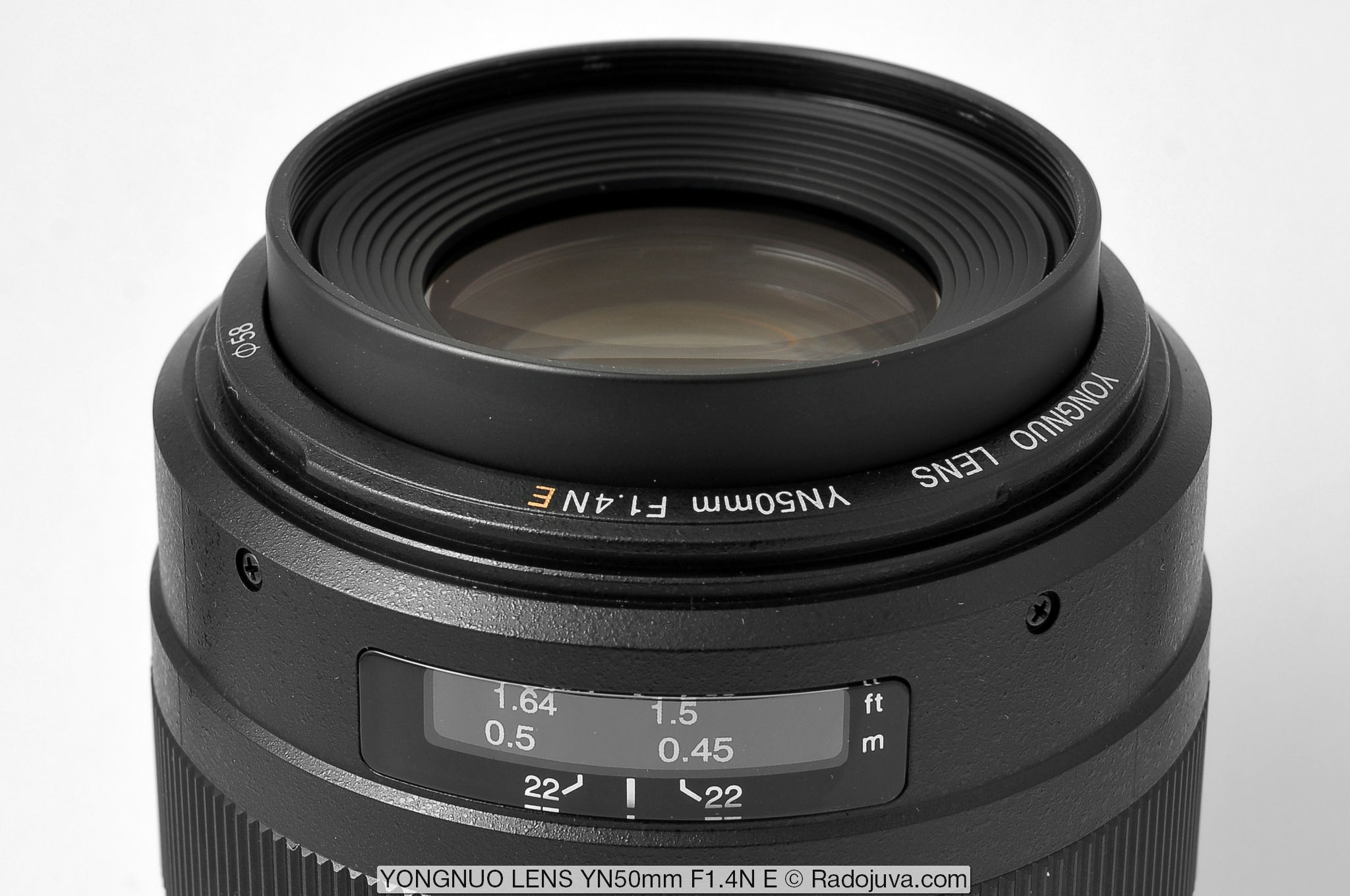
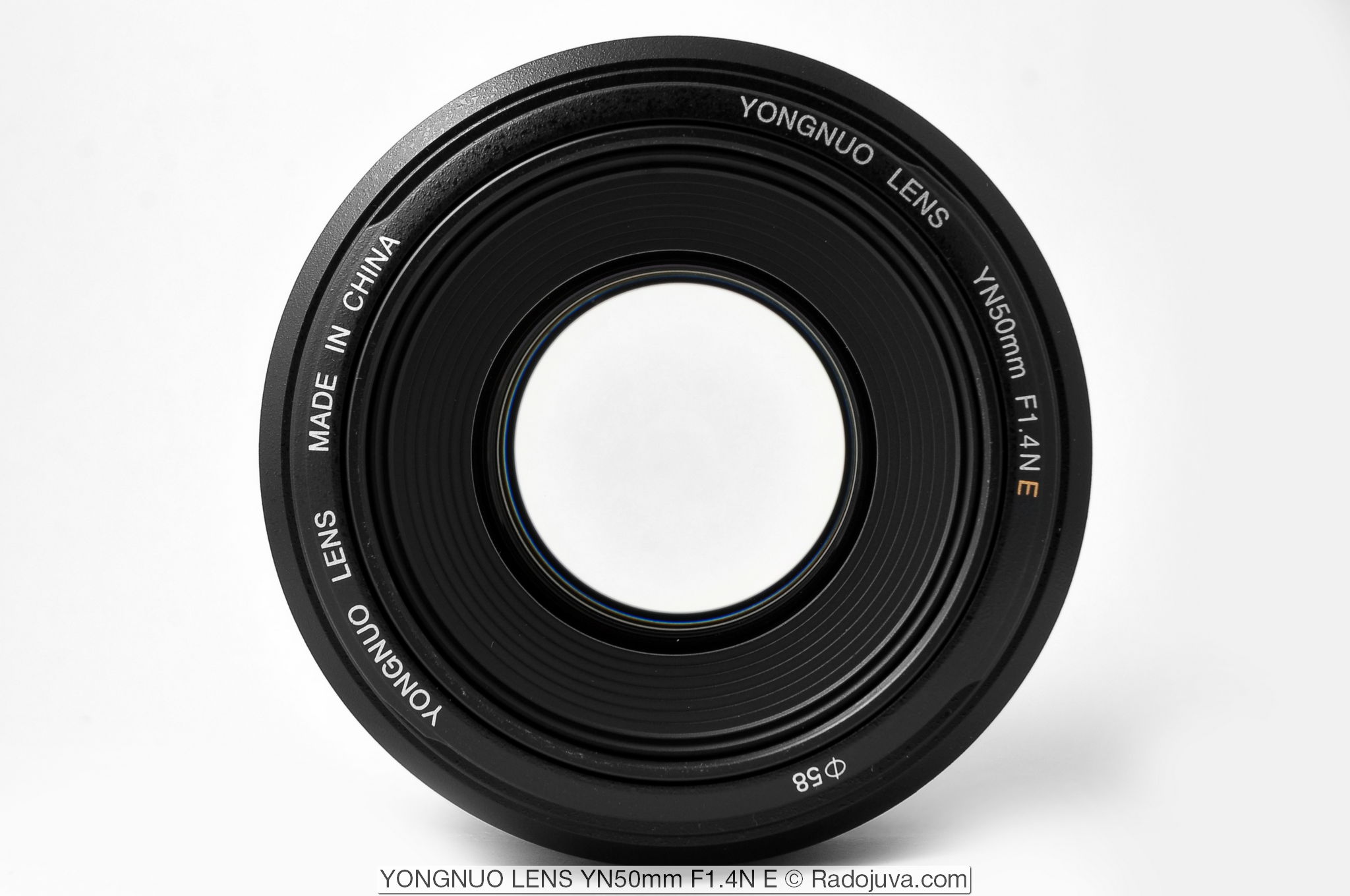
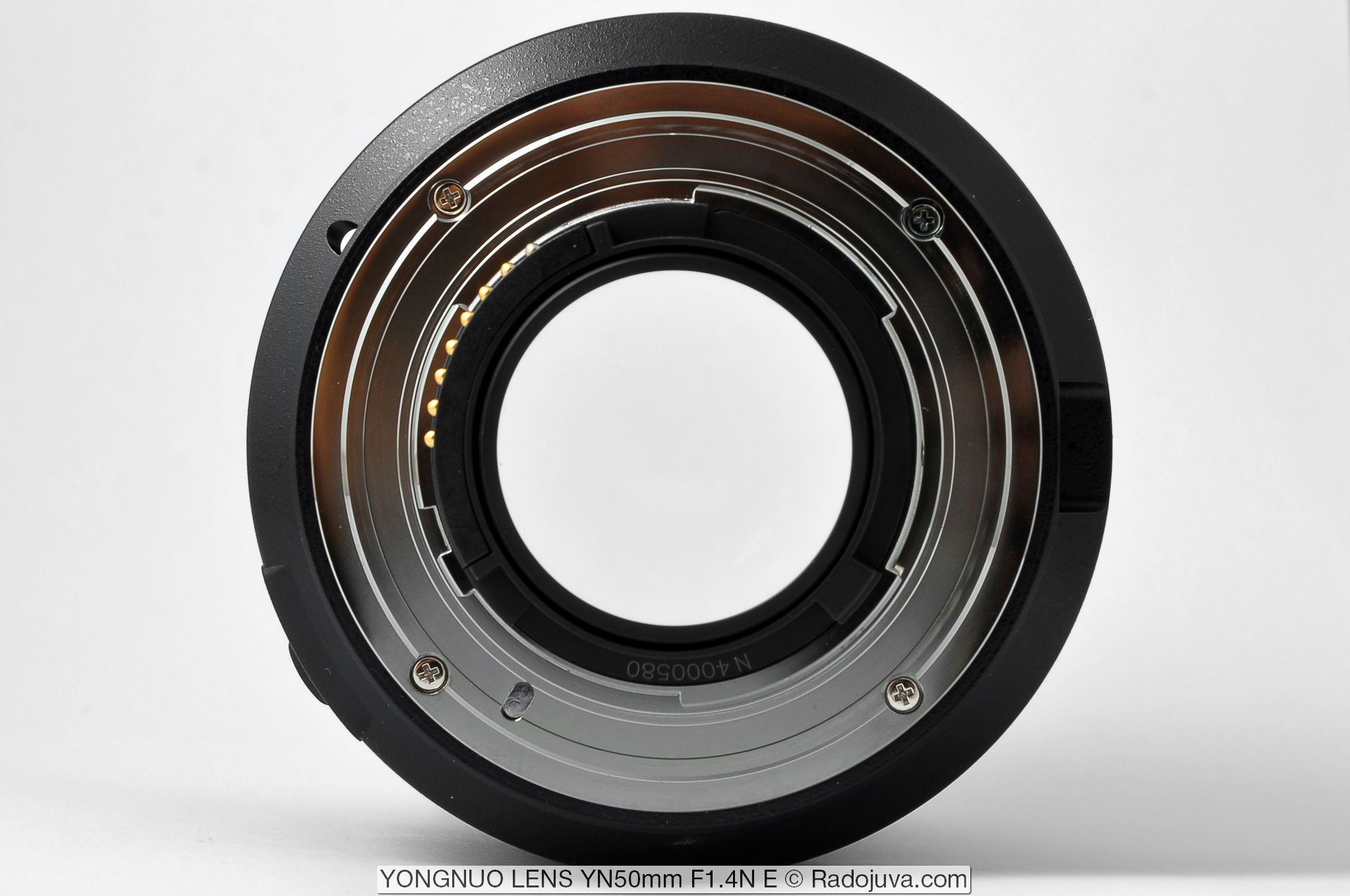
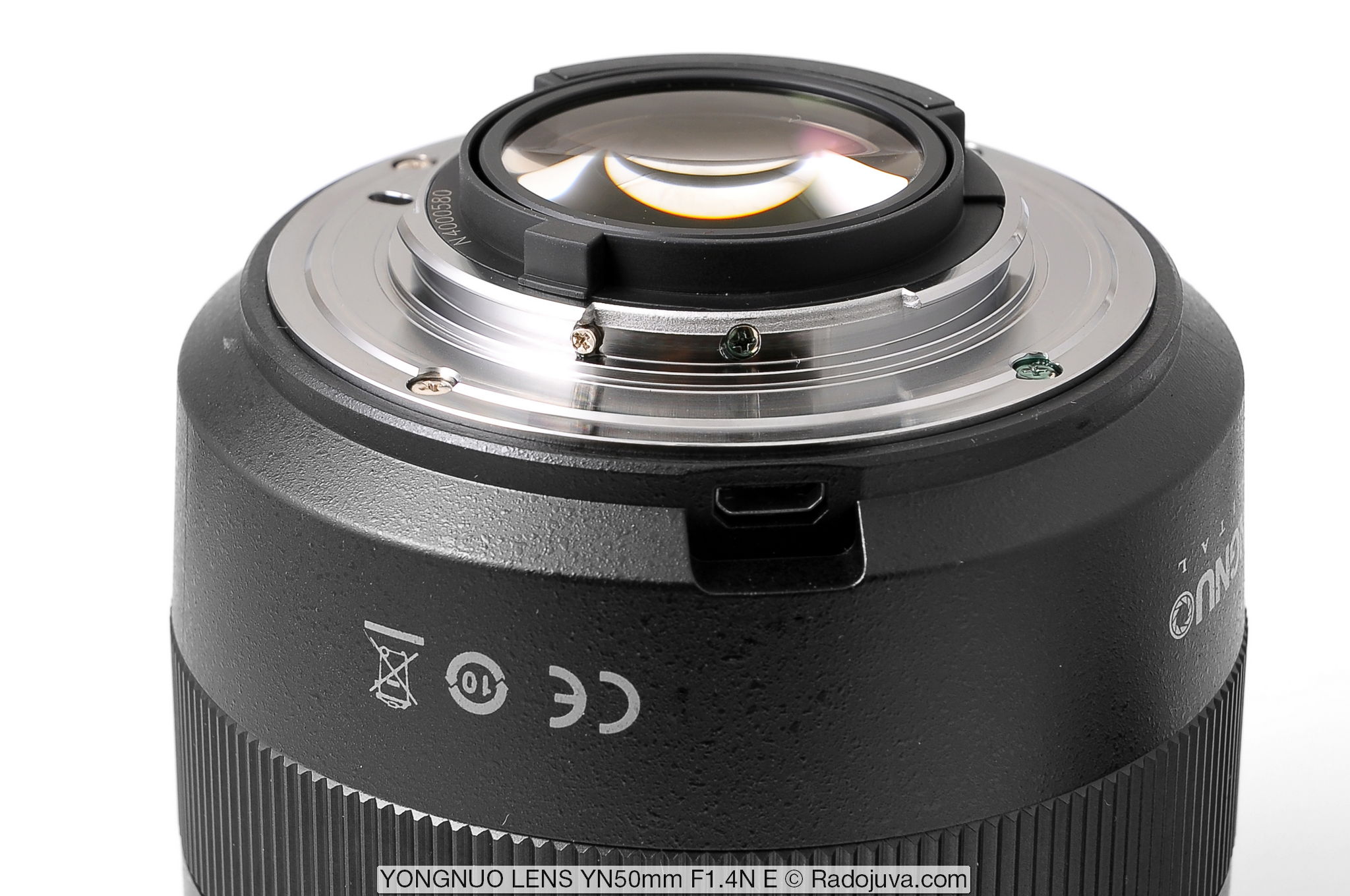




















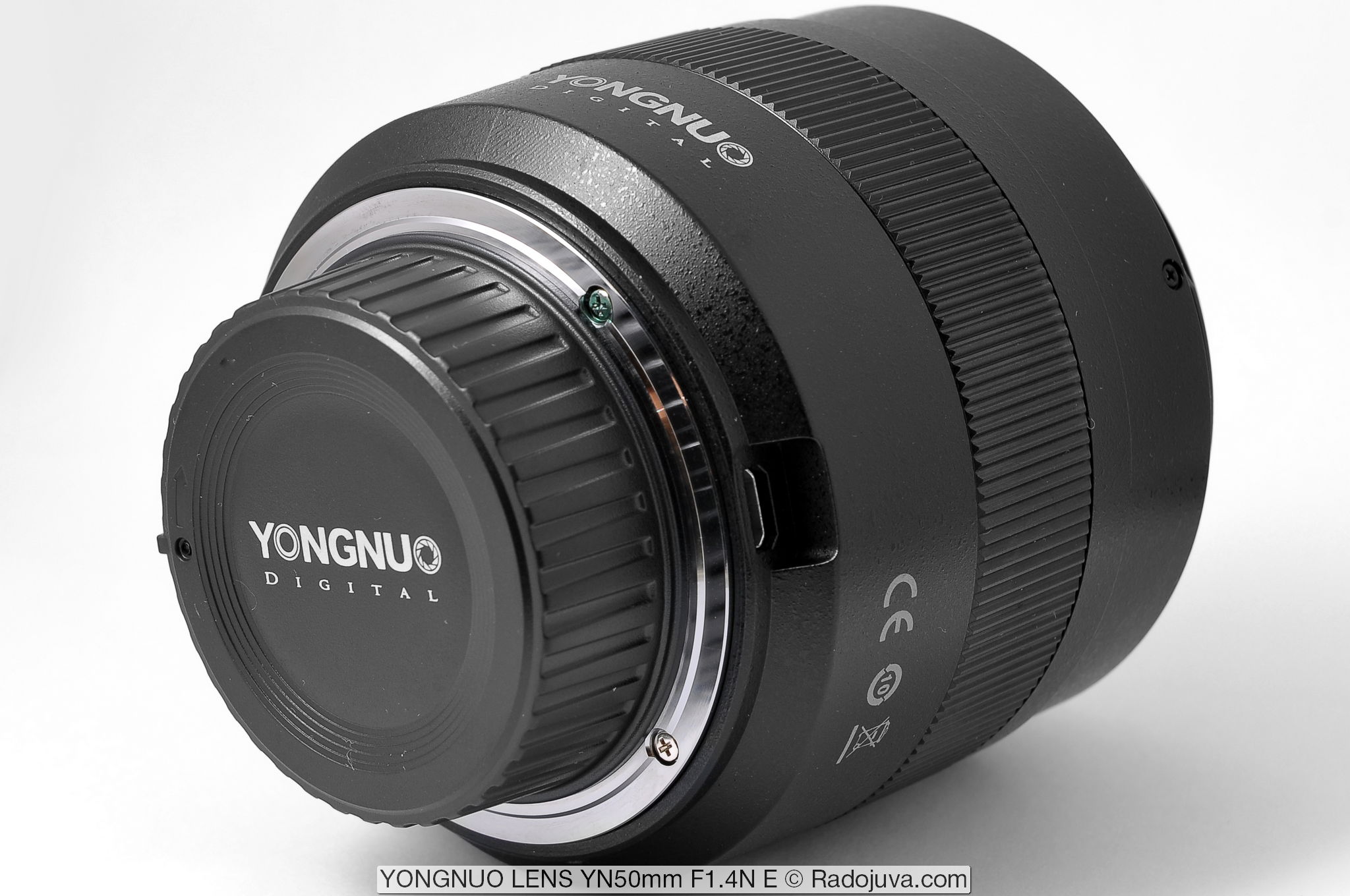















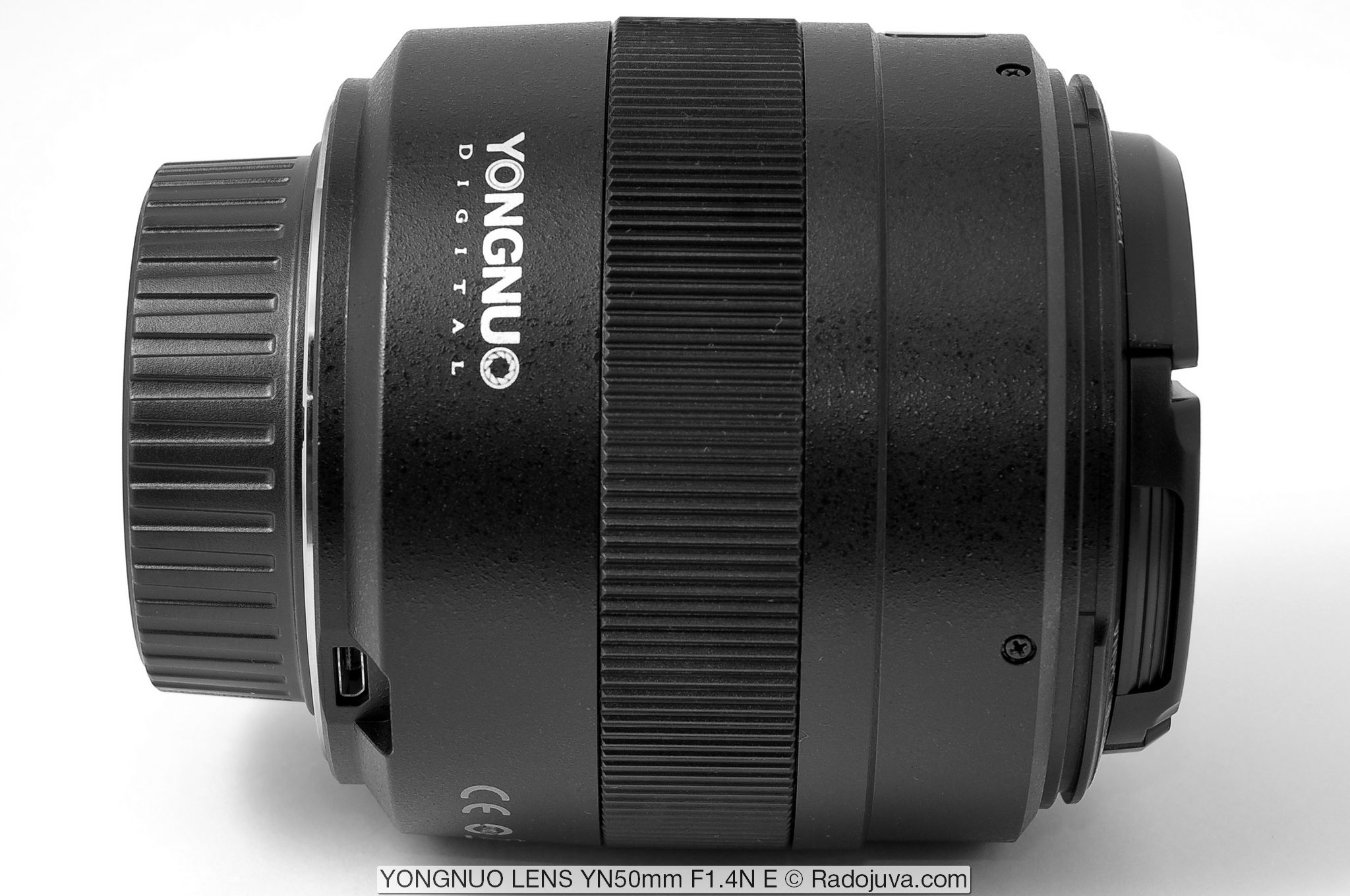






























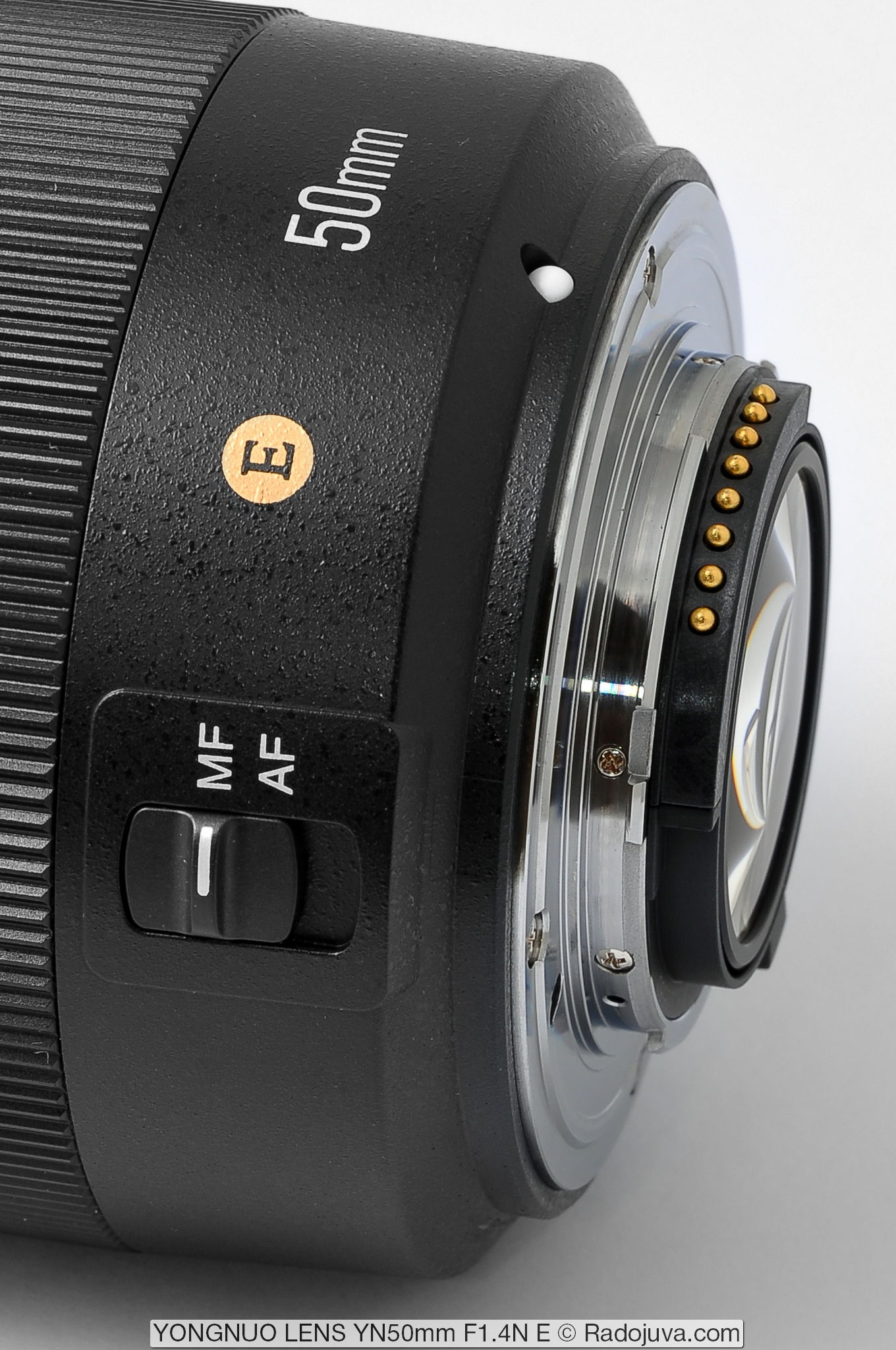
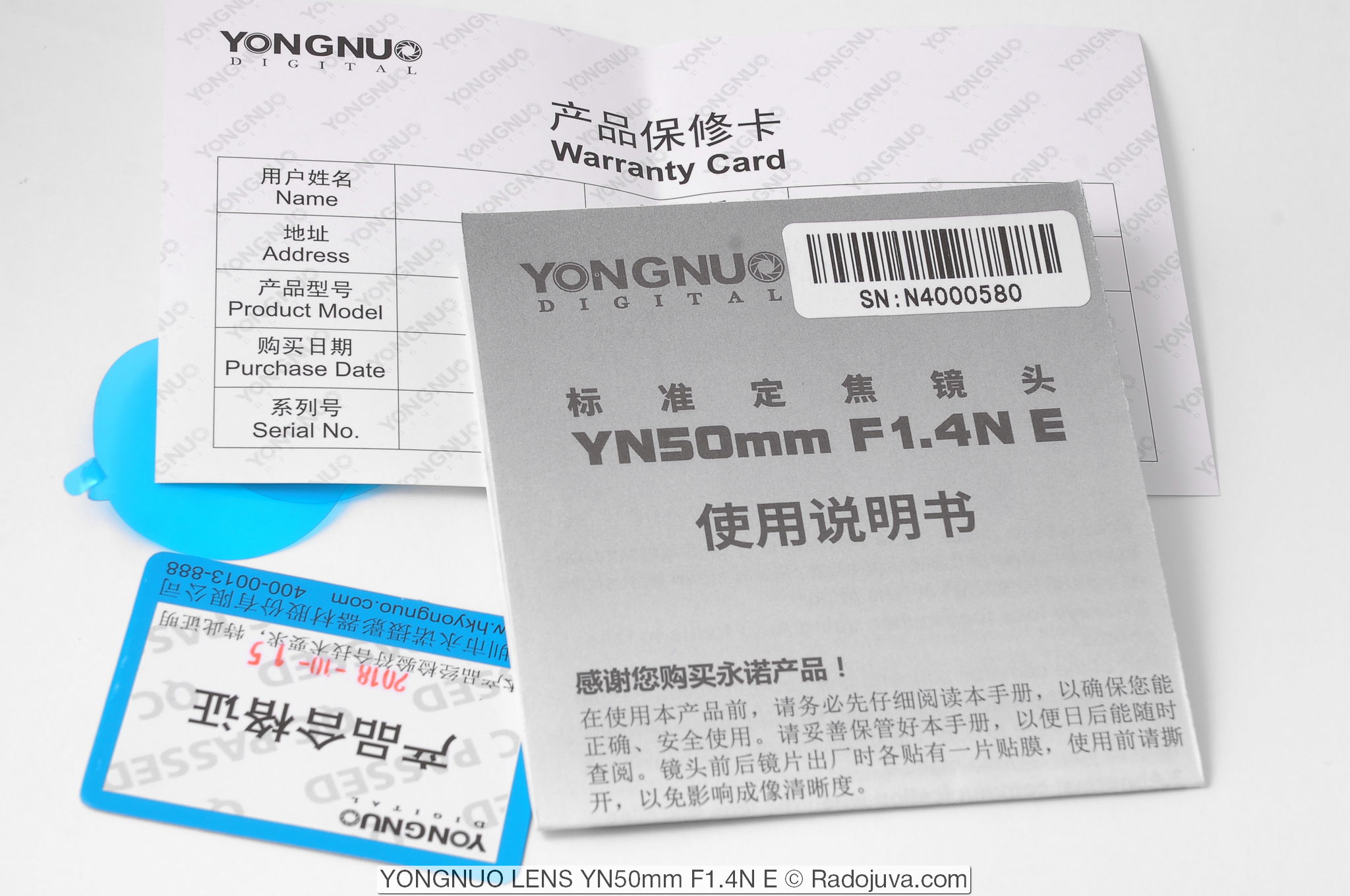
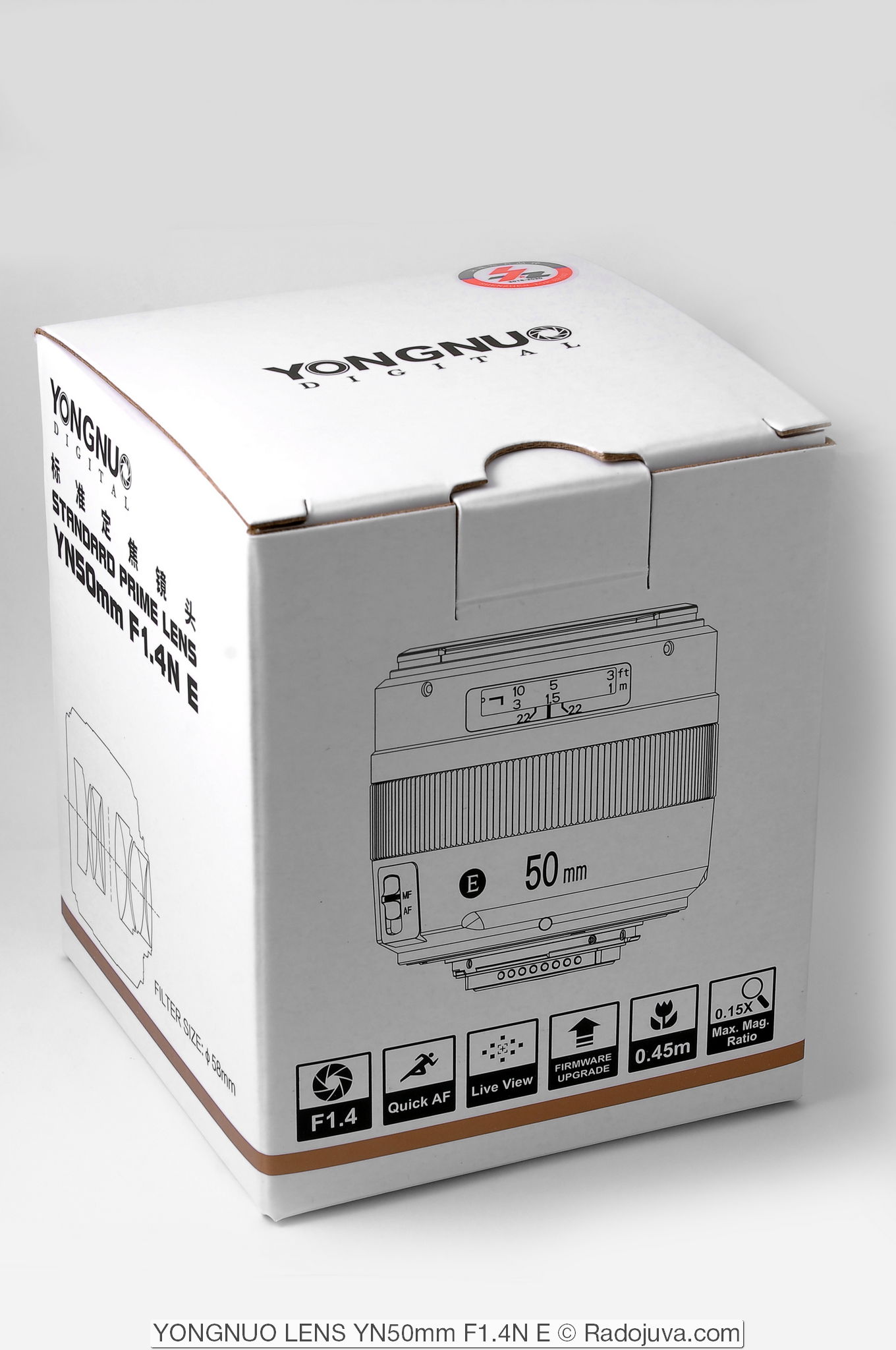
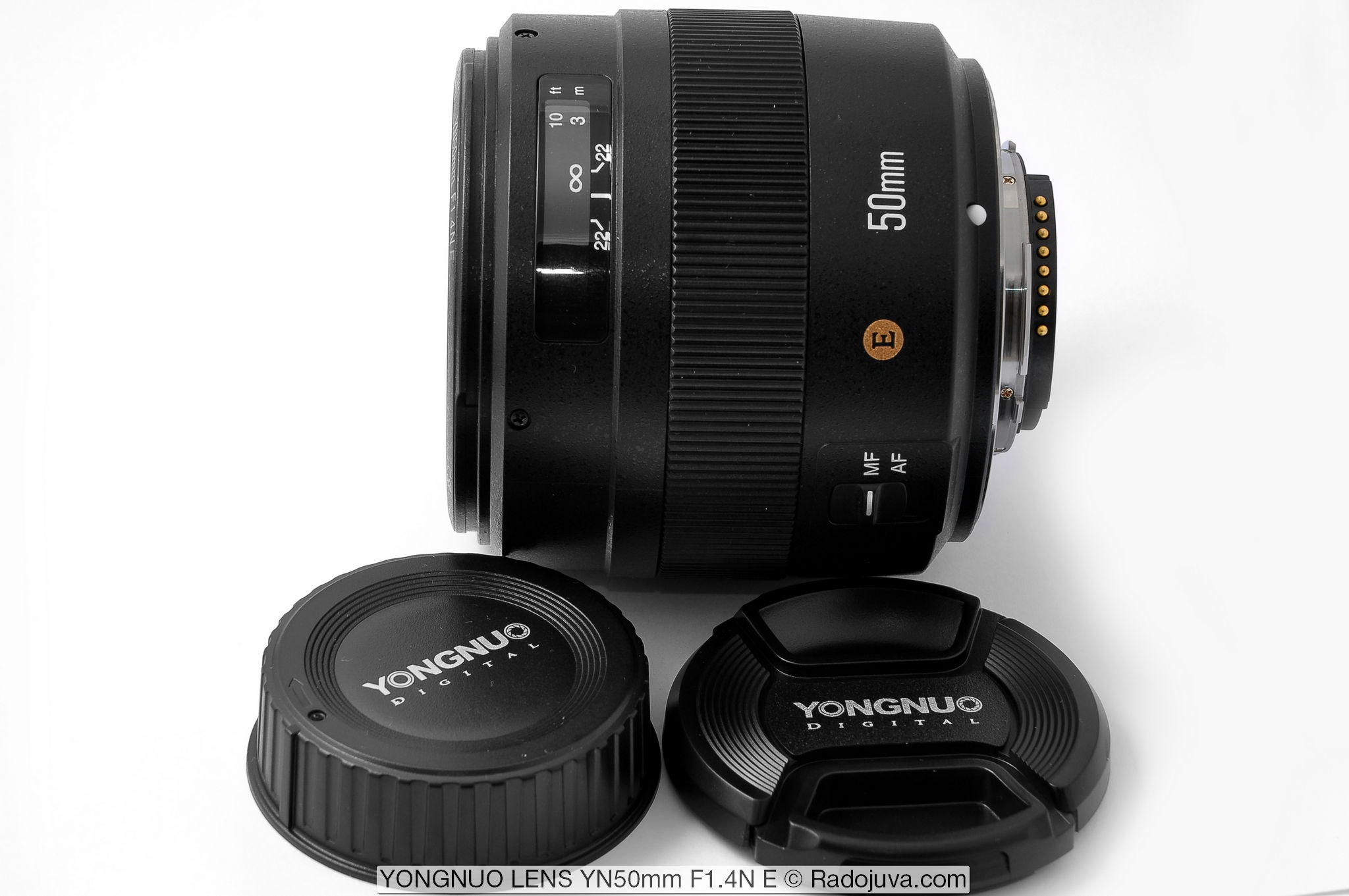

Vignette fear on ff.
I liked it. Yes, for that kind of money, you can’t find fault with its shortcomings.
What a delicious picture on the open on the D80 ... :)
And thanks for the delicious D80 matrix
Any function (or approach) is tested at extremes. Value for money is just a ratio. For example, shit - it's generally free in the numerator, as a rule. However, in the usual case, no one needs it anyway. This lens does not say that shit. But also nothing outstanding. Therefore, one can and should find fault with the shortcomings. But taking such or Carl Zeiss, IMHO, is determined more by the willingness (ability, ability) to pay a certain amount of money for a certain result, and not by this ratio.
Does the CZ have an autofocus fifties 1.4 for Nikon / Canon? but I didn’t know :)
It is incorrect to compare here.
By the way, Zeiss has a rare Carl Zeiss Planar T * 1.4 / 50 for Contax N with autofocus, through a special adapter it becomes on Canon SLR cameras while maintaining all the autofocus and aperture operability.
Why mention (praise) the outdated and poor optical design of Planar, (Karl Zeiss, Nikon and others) consisting of only 6 lenses? After all, she never gave the required quality. Look at the optical design of the YN50F1.4 - how complicated it is, how thick the lenses are, how many lenses are glued from different types of glass, how heavy it is. What, how can you make a good lens light? The article provides an argument, they say, the Nikon lens is twice as light as YN and this is an advantage and it's good. So, the author, you have not figured it out, you overslept the appearance of the wonderful and revolutionary (for the price) YN50F1.4 Its image quality at open aperture is amazing, I shoot weddings on it only at open aperture. In general, I do not want to change the lens for another, even when the focal one is required another, because the photos from this lens DO NOT REQUIRE PROCESSING AT ALL! And there are no aberrations and no chromaticity in it at all! Author, do not mislead readers by praising Nikon! I have this lens, I bought it one of the first, accidentally finding it on Ali. On the Aliexpress website, I saw the optical scheme - I immediately realized that the lens was wonderful, and its price was amazing (symbolic). I was not mistaken. Now I will buy a new 35 (F1.4) from Yongnuo. I'm waiting for a new 85-ku, which I will buy right away. I repeat once again, the author, you WAS AWAKENING THE APPEARANCE OF THIS WONDERFUL LENS is not 4 months old. And you didn’t understand the main thing: NOW THE WORKING AND AUTOFOCUS IRIS 1.4 IS AVAILABLE FOR THE POOREST PHOTOGRAPHERS.
I wrote about the Canon version. Nikon's version of YN really appeared later ... I'll add more conclusions: if YN continues to make such cheap and beautiful glasses as YN50F1.4, then Nikon and Canon will have a hard time, very difficult ...
1. Where do I extol Planar here? In the review it is quite the opposite, in the review section “Differences from Nikon 50 / 1.4G”The new scheme is mentioned as a clear plus. A quote from my own review “Yongnuo E 50 / 1.4N uses a more complex and unusual optical design. Nikon 50 / 1.4G uses a more classic layout ”
2. I did not oversleep. This is generally the first review of the Yongnuo E 50 / 1.4N on the expanses of the former CIS, maybe even in general on the network. Perhaps you meant a review version for Canon, which came out a little later than a review on mysku.ru
3. Everything is not so simple and everything very much depends on the requirements for optics. If F / 1.4 is suitable for someone, then someone is not. Also, a very important point is the work of autofocus and, unfortunately, with YN this is still bad.
4. Yes, and the whole comment is similar to a PR lens without an attempt to constructively look at it from all sides, this is especially evident in CAPS LOCK (capital letters are generally ugly, this is considered an analogue of screaming in our comprehensive network)
Okay, I'm changing the text CZ to Sigma 50 1.4
Sorry, I just wrote my review for this lens but in the review under the version for kenon, but I myself tested the version for Nikon. Therefore, here I will copy it, the way dear Arkady will forgive me ...
You are welcome! Today I went to the store here and compared this lens with a fifty fifty 50 from Nikon and Canon. My subjective opinion is this: the Canon lens was not even near, with the exception of one parameter - a bit sharper in the corners at all apertures (I'm talking only about image quality, of course, Canon autofocus is beyond praise). A fifty-fifty 1,4 50G from Nikon is closer to it, but it still lags significantly behind in terms of image quality, and not only in sharpness. The micro contrast of this lens is at the level of the best Zeiss lenses (surprised?), The spatial sharpness is also at the Zeiss level (not surprisingly with 1,4 low-dispersion glasses and a complex optical formula!), The transfer of textures is higher than Nikon, the colors are warmer than mine Nikon, it’s even noticeably warmer, the distortion is significantly lower, practically nothing needs to be corrected, autofocus works like in the 4s, but at least on my D80s it worked without problems and didn’t miss, the lens is heavy, assembled at an average level, it also reproduces color gradations significantly l chshe than fifty dollars from Nikon and slightly better than fifty dollars from Canon (3 50 USM). On open HA, they are minimal (at Nikon they completely spoil the picture, and Canonovsky can be considered completely inactive on F1,4), in contrast Canonovsky is also non-working on F1.4 and this one is completely working. Bokeh is slightly better than Nikon, although it is also very good (Canon doesn’t count, it has F1.4 just for the sake of the bright viewfinder). The price of the new YN 1.4 50 in China is $ 1.4, the Nikon 127 50G control unit in an almost new state is about $ 1.4, and the Canon 280 50 USM is $ 1.4. I take this opportunity and I want to say that it would be very good if the respected Arkady introduced any even the most primitive objective test for sharpness, contrast and micro contrast, spatial sharpness, chromatic aberration and distortion into the testing program. Then everyone will see firsthand not only field tests of the lenses, but also comparisons with each other and will themselves be convinced that many old and inexpensive lenses (new ones too) sometimes significantly surpass eminent and expensive ones. It would also be nice to put some figurine with a motley background and take a photo of it with all the tested lenses so that you can compare the bokeh a hundred, because sometimes the lens is valued precisely because of its bokeh and all other characteristics fade into the background. In a word - I personally have not used a high-speed fifty dollars a long time and sometimes thought to buy Tamron 260 / 45 VC (it is also great and also surpasses all similar ones from Canon or Nikon, but the aperture is not quite the same) or Nikon 1.8 55 AI (or Nikon 1.2 50 AIS ), but if Tamron is inexpensive, about 1.2 dollars, then the old Nikons cost around 220-350 dollars, and now I think that this Yongnuo can be bought for itself, and if the company corrects some shortcomings in terms of assembly, like this already done with other lenses, then ...
Thanks. Under the canon erased.
You got the impression that you liked the analogue for Canon more ...
I would not say so, just an impression
D80 again nyasha)
It’s a pity, with a change in the diaphragm, a jamb turned out, otherwise it would be a mast-glass for old used cameras.
Interestingly, is this Yaga optically better than the Russian Zenitar 50 / 1.2 or not?
Arkady, typos:
"The lens barrel is mostly made"
“Has one more mark for work in the infrared spectrum” (Not more, but simply has, probably, it will be more correct)
"Optical performance of both lenses"
"With 3 MP it is possible without any problems"
"Like the vast majority of other Nikon cameras"
"Extra high refractive index" (together)
not systematic focusing errors (continuous)
“About certified service centers for maintenance” (hyphenated)
Thank you for the great and pleasant view of the lens!
Fixed
“The Yongnuo E 50 / 1.4N is cheaper than not only any full frame f / 1.4 lens, but also any cropped f / 1.4 lens” - I bought a 7mm f / 55 1.4artisans on AliExpress. There it costs $ 119, i.e. cheaper.
Fixed
Of course, I meant the presence of autofocus
Well yes. And another system, actually. Although they are released on Canon.
They say that the 7artisans 55mm f / 1.4 you bought has just excellent optical quality and very good drawing. Would you like to make a small overview in examples? Or provide Arkady for review, if there is such an opportunity ...
I found an overview of my lens here: https://yukosteel.wordpress.com/2018/05/07/7artisans-55mm-f1-4-review-fuji-fx-mount/
I could write about my lens and camera (Panasonic Lumix DMC-G80), but I'm not sure if there will be a good review. I am not as deep in the subject as Arkady or Rodion with his experiments on restoration and adaptation of lenses, but I have been photographing at jazz concerts for quite some time. I had to photograph in low light, I shot with 50mm f / 2.0, 25mm f / 1.7 lenses, now 55mm f / 1.4. A mirrorless camera with a manual lens is a good combination. it is convenient to focus on focus with focus peaking and there is image stabilization due to sensor shift.
I could also provide for a review. I don’t know, however, how this will happen.
Thank you, they are still interesting and inexpensive. 35/1.2 Yes
I am writing a review of my lens. :) But I want to take more photos with him, as well as shoot a series of test shots at different apertures to compare the crop of 100% in the center and the edge.
The review is ready, read: https://radojuva.com/2018/11/7artisans-55-mm-f-1-4-review-test/ :)
I understand that 7artisans are only for BZK cameras? Or will they work with an adapter on a DSLR?
Only for mirrorless. On SLR in any way.
"The Yongnuo E 50 / 1.4N is an E-lens, which theoretically means that it includes all the functions available to G lenses, which in turn includes all the functions available to D lenses."
Sounds funny to anyone who uses Canon technology.
Canon owners have a review for Canon - https://radojuva.com/2018/09/yongnuo-lens-yn-50-mm-f-1-4-review/
SAVING ON A SHOULDER VERSION!
but it’s better not to drop the lens — very fragile)
Good afternoon. Can you ask an off-topic question? In the photo on the Nikon d750 screen, you can see the image of the focus area with a red highlighted point on which the focus fell (only if shot through the peephole. If not through live view) - how to remove it? Thanks.
Good day! Thanks for the review. From your review, I understand that in terms of sharpness on an open aperture on a crop with a 24 megapixel nikkor 50 f / 1.8g at a comparable cost would be better?
Yes, in general it will be better
Is it better to buy a yongnuo 50 f / 1.8 to try bokeh? Are they roughly comparable to this lens in sharpness? Only the price is 2 times different
You could say that. Version 1.4 is interesting in itself, but if you don’t feel like paying, you can try yn50 / 1.8, and if you have a camera with a motor, then nikon 50 / 1.8D.
Thanks for the great review! It is written about everything that can be interesting to know about the lens. A good picture, but the appearance surprises with its rudeness ... if they are so careless about the design of an expensive lens, then this leads to gloomy thoughts ... For the same money, you can find an original used in good condition. Here Yongnu will only be of interest to people living in small towns where there is no good secondary market for photographers.
But I like the design! the motor is only time to set the ultrasonic, like everyone
Honestly, before your review, I did not suspect the existence of such a lens. Thank you for such a detailed description!
With all due respect, thank you for your reviews, but how many flowers / leaflets can I take already? What can these pictures show in general? As not a review, so 80% of the leaves. Shoot more people, I want to see examples of pictures with the real purpose of photographic equipment. Various portraits, large / growth, on open apertures.
But it turns out that mostly open leaflets and fences, and the rest is all closed. What can a photographer understand from such photographs?
I support. The same thought flashed that people are not enough in the frame. Although there are photos of the girl in this review, overall I liked the picture.
I really like the picture from the lens. I shoot mostly animals, draws great. Of course, sometimes he does not have time, but with animals this is normal.
What camera are you using?
D5500 and D7100
Firmware 04
Thanks for the review, it was interesting to read. I was looking for the review with the thought “is it interesting, is there already a review on Radozhiv?”, It turned out - there is. It is very cool. It's a pity to compare with nothing, I just can't beat my Nikkor 40mm f2.8g after switching to FF (which, by the way, did not impress me)
Soon there should be a review of 14 / 2.8 under Nikon
this yagi will have better autofocus than sigma 50 1.4 non-arth? :)
The author of och neatly said that the glass is not bad at 12mp dx and normal at 12 mp ff, or something like that. Perhaps on very ancient carcasses, it looks like something, on d800e and on d7200 at best 3-. f1,4 - wild software, with 1,8 something - like that, with 2,8 - it will do, f4 - normal. Maybe, if you use only the whale dx kit, then this yengnu can sing deramba. And so the glass is about nothing, besides, on two carcasses there are some jambs with af, sometimes it stupidly stops working, neither the illumination nor the temperature are the cause of the troubles, on-off, disconnection is not a panacea. Sometimes it works. Focusing motor, like on children's email. toys - horror, as it squeals. I accidentally found the glass on the ibey, when this review was not yet available, only for the Kent version. Usually, these adventurous purchases were successful. I can't say so about this, unfortunately. Perhaps I am so lucky with my copy. Therefore, if there are readily available equivalents, then it is better not to remember this one. If only the geography is such that only the Russian post office is within easy reach and the carcass is not less than ten years old ... although it is not the best option to use it only on the open ... buy your own fifty kopecks better.
Guys, I bought this lens
Everything seems to be cool, you take large portraits and don’t blow your mustache
But shooting meters from 3x a very unpleasant back focus appears
Is there any way to fix it? for others did not come across this kind of like
Most likely, the problem cannot be solved just like that. If the camera has focus adjustment, try using it. Live View should also help. Perhaps someday another firmware will be released for it.
Good day. Thanks for the review. More recently, I discovered lenses from China as a phenomenon. Thinking about a purchase. There is a D7100 camera, so I looked towards the used 50f / 1.4D nikkor, the price is approximately comparable to the new Yongnuo. Any thoughts on comparing these two lenses? In the review I saw only a comparison with the G version
Although at the expense of a comparable price, I got excited. 1.4D from Japanese auctions will cost 15-20 thousand. Chinese brother 10-11 thousand. Is Nikon's ancestor so much better?
Optically 1.4d is not better, but there will be less problems with autofocus
And why order it second-hand from Japanese auctions at the price of the same NEW?
Gray ones on Yandexmarket cost from 18k rubles, and white ones from 20k rubles.
If you try hard, you can find copies for 8-9 thousand without the cost of delivery. with delivery it will be in the region of 13 thousand. which is quite comparable with the cost of yongnuo, for 18 thousand it’s already necessary to think carefully, I don’t earn money with the camera) just amateur shooting
I read your review. I ordered it on aliexpress. Received. True Fragma is not 1.4 but 1.8.
There is no usb port. And the problem got out ... ..back focus. Can you tell me how to deal with this?
These are two different lenses. 50 1.4 and 50 1.8. Very different, including the price. If you bought 1.8 for the price of 1.4, you were deceived.
How to deal with back focus? If there is no autofocus adjustment on the carcass, carry it to the service.
Good day! Please tell me, I have a Nikon AF Nikkor 50mm 1: 1.8D, 'D'-version, MKIII, I want to change the YONGNUO LENS YN50mm F1.4N E for this model with a screwdriver. Is it worth it?
Or there is an option to take Nikon AF Nikkor 50mm 1: 1.4D (made in Japan) for a screwdriver, since it is inexpensive.
Thank you very much. I can’t suffer.
take better 1.8G
I have 1,8 now and you suggest I change it to 1,8 but with an electric motor? I want to increase the aperture on the crop. So I ask for advice.
Arkady will be grateful for the answer.
You have been given good advice. It’s difficult to shoot at 1.4, and it’s only 2/3 feet lighter than 1.8. If you still want 1.4, then this Yong will be just right
Thanks. Do you consider a variant with Nikon AF Nikkor 50mm 1: 1.4D for a screwdriver? Too bad? Star?
On 1.4, version 1.4D is inferior in sharpness to versions 1.8G, 1.4G and even this Yongnuo 1.4 :)
The last question - Nikon AF-S NIKKOR 50mm f / 1.4G (as I understand it more fresh Nikon) or Yongnuo 1.4?
I have 50mm 1.4G and 1.8G and I can’t figure out which one is better and which is worse
so 1.8G will probably be better than Yongnuo, well, except that it doesn't have 1.4
Do not understand, Yongnuo does not have 1,4? We write comments in an article about Yongnuo 1,4
1.8G is obviously better than Yongnuo except aperture
I had Yongnuo 1.8 and I’ll tell you a very bad lens. And you can’t tell mine without an armed look. But overall, thanks for the tip.
Hmm, after looking at the pictures here, I switched to a review of Zenith-1,7 m and experienced a blessed relaxation from the photos presented there.
Too contrasty and too colorful. In the pursuit of glare resistance and saturation, they apparently cause enlightenment thicker.
I would like to join the comment “… how long can you take pictures of flowers / leaves?”. And the crowns of trees in the whole frame are uninformative photos.
Arkady, I have a D 90 with the order of obsolete and annoying Nikon AF Nikkor 50mm 1: 1.8D I want to change to Yongnuo E 50 / 1.4N. Is it worth it? You also had such a camera and extensive experience in using the Nikon AF Nikkor 50mm 1: 1.8D lens. I want more clarity and aperture. In a word, is the game worth the candle (here I read that Yongnuo 35 1,4 was announced for Nikon can even wait for him and take it as a regular portrait portrait)? PS After your review, I bought the Yongnuo 100 and it makes me extremely happy. Thank you. I would be grateful for the answer. Although the question turned out to be cumbersome.
Aperture control will not work on the Nikon D90, therefore it will be possible to shoot only at F / 1.4. I would leave 50 1.8D, or change it to Nikon 50 / 1.8G. Most likely 35 1.4 will be only in half a year.
Thanks. Why not? On the Yongnuo 100 it works. This is the first question, and the second is still Yongnuo F / 1.4 in quality compared to Nikon 50 1.8D? thanks a lot.
Because the d90 does not know how to control the electric diaphragm. On yong 100 aperture with a mechanical drive.
You upset me ... My wife has a Nikon 3400 - can he manage?